Touring Norway by Motorhome
Want to tour Norway by motorhome or campervan? This hands-on guide includes all the practical information you’ll need to know before you go!
Norway in a Nutshell
Key Facts for Touring Norway by Motorhome
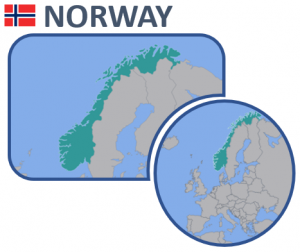 If you’re pressed for time, here are the essential facts to know when planning your motorhome tour of Norway. We dive into more detail on each of these later in this guide.
If you’re pressed for time, here are the essential facts to know when planning your motorhome tour of Norway. We dive into more detail on each of these later in this guide.
- Weather – for a snow-free journey, aim to be travelling in the far north in June, July and August where you can experience beautifully sunny days (and nights inside the Arctic Circle, where the sun will shine all night).
- Currency – Norway uses the Norwegian Krone (NOK) – and 10 NOK is roughly £1.
- Insurance – most motorhome insurance policies will cover Norway – check your policy. If you have breakdown insurance, check the repatriation limit, as we’ve been told it’s very expensive (several thousand pounds) to be taken home on a flatbed, and repairs in-country can be prohibitively expensive.
- Language – locals speak Norwegian but generally speak flawless English too.
- Place to Stay – Norway has a ‘right to roam’ law which enables motorhomes to free camp across much of the country. In addition there’s a good network of aires and campsites.
- Mobile Phone and Internet – although not in the EU, several UK-based telco companies offer pay-as-you-go or contract SIM cards where you can use your UK allowance in Norway, subject to restrictions. We use Three’s Internet with Legs SIM cards in Norway.
- Getting there from the UK – there is no direct ferry from the UK to Norway or Denmark, so gear up for a road trip folks! There are various bridge and ferry options available once you’re in Denmark.
- Renting a Van – if you don’t have the time to drive your own motorhome, there are several companies renting vans in Norway. Expect prices of roughly £700 to £2000 a week for a two berth panel van.
- Customs – Norway has customs controls limiting the import of alcohol, as well as other foodstuffs (you can’t bring in potatoes for example). Check the Norwegian customs website for more details.
- Pet Dogs – as well as a valid Pet Passport, your pet dog will need a vet-administered worming treatment before entering Norway, like when returning to the UK.
- Roads – generally well-maintained but speed limits are low. The fastest routes from Oslo in the south to the North Cape (about 1200 miles) go through Sweden, so Sweden’s sometimes used as a ‘back door’ into Norway. Many roads and tunnels are narrow, and you’ll need to allow more time for journeys.
- Headlights – you legally need your dipped headlights on when driving, even in bright daylight.
- Compulsory Equipment – download the AA’s latest requirements PDF to see what you need to carry.
- Tyres – check the AA’s page for the latest details. If you plan to travel to Norway in winter, be aware of the difficult road conditions and plan to use studded or winter tyres.
- LPG (Gas) – available from limited locations across Norway. Plan in advance to avoid running out.
- Tolls – Norway has various toll roads across the country but they aren’t massively expensive, and some are hard to avoid.
- Ferries – Norway’s coastline is enormously indented with fjords and peppered with islands, so you’ll most likely be using lots of ferries. They don’t need to be booked, but the costs increase dramatically for vans over 6 metres long, and for each additional metre.
Great Places to Motorhome to in Norway
Norway’s packed full of simply incredible places. Here are just a few of the ones we’ve visited. Click on the links below to get the full blog post, with the GPS co-ordinates of where we stayed overnight.
- The North Cape (blog post here)
- Midnight Sun in the Arctic (blog post here)
- Senja Island (blog post here)
- The Lofoten Islands (blog post here)
- The Saltstraumen, Northern Lights and the Coast Route South from Bodø (first blog post here)
- The Trollstigen Pass (blog post here)
- The Dalsnibba Viewpoint and Geirangerfjord (blog post here)
- The Briksdal Glacier (blog post here)
- The Flåm Railway (blog post here)
- The Village of Sand (blog post here)
- Pulpit Rock (blog post here)
- Oslo (blog post here)
We found the Norwegian Tourist Board website to be really helpful in our planning (www.visitnorway.com). The site does a great job of guiding you around the attractions of this magnificent country. If you search the site for ‘motorhome’ you’ll also find details of service points at petrol stations and official parking areas.
A Quick Look at Norway – Some Short Videos
A quick demo of a motorhome using one of Norway’s many ferries.
Beautiful Haukland Beach on the Lofoten archipelago in the Arctic.
Trollstigen, one of the most famous National Tourist Routes in Norway.
The Saltstraumen strait with one of the strongest tidal currents in the world.
Nordkapp, the northmost point of continental Europe.
An out-of-this-world campsite near the famous Briksdal Glacier.
How Much Does It Cost to Tour Norway?
Norway has a reputation for being incredibly expensive to travel. The great news for anyone with their own motorhome or campervan is this: that simply doesn’t apply to you! If you stock up well with food before entering Scandinavia, and limit eating out or buying local beer and wine, you can extensively travel this incredible country for not much money.
On our tour in 2016 we spent 11 weeks (78 days) in the summer in Norway and averaged less than £30 a day for two people plus a dog. That included all of our day-to-day costs: diesel, supermarket shopping before we entered Norway and restocking when we left, shopping in Norway, road tolls, LPG, overnight stays, visiting a museum in Oslo, ferries and so on. It didn’t include our one-off costs such as insurance and van depreciation, nor did it include the diesel, bridges or ferries to get to Norway in the first place.
* we stocked up with around £200 of food before we arrived and spent a further £100 when left to replenish empty cupboards. This additional £300 is included in the £15 per person per day average.
Norway by Motorhome – In Depth
When to Go to Norway
Unless you are a fan of driving in the snow and ice, summer is the time to visit. The road networks seem to be fully open from the end of May until October and peak season is July, when the Norwegians have their summer holidays. The country is huge so there is plenty of room for everyone, but it’s worth making note that the motorhome parking in popular places and cities will get full in July. We arrived in the north of the country in mid-July, so by the time we hit the ‘hot spots’, we were out of peak season.
Midsummer is a huge thing in Scandinavia, so if you fancy a party make sure you are there for then. Getting up into the Arctic Circle during June and July will let you experience the Midnight Sun – we recommend eye masks as it really messed up our sleep patterns even though we blacked out the van as much as possible. From the end of August onwards, if you are lucky, you may get to see the Northern Lights too (the further north you are, the better chance you’ll have).
The weather in summer was generally warm, even in the Arctic. We needed sun cream on a fair few days, and sported shorts from time to time. Generally we’d be OK in walking boots, jeans and T-shirts with jumpers and a light coat.
Driving Your Own Motorhome to Norway
There are no ferry routes running between the UK and Norway, or even between the UK and Denmark, so it’s road trip time folks unless you find a freight service to ship your van across the North Sea. You have these options (with tons of variants in between):
- Fastest Route – EuroTunnel to France. Then drive across France, Belgium, the Netherlands and Germany to Denmark. Drive to Hirtshals in northern Denmark and take a ferry to Kristiansand. Google Maps shows this route as 1116 miles, and taking (an optimistic) 21 hours of driving, tunnel and ferries.
- Route via Sweden – as above, but instead of taking a ferry from Denmark to Norway, drive across the Storebælt toll bridge in Denmark, then the Øresund toll bridge to cross into Sweden. From there drive across the land border into Norway. Latest motorhome costs of the the Øresund bridge. Latest motorhome costs for the Storebælt bridge.
- Route from the Baltics – on a longer European tour you can take a ferry from Tallinn in Estonia across the Gulf of Finland to Helsinki. From there, you can drive north through Finland, across the Arctic Circle and cross into Norway either directly (makes sense if you’re heading for Nordkapp), or via Sweden (if you’re heading to the Lofoten Islands).
Whichever route you opt for, before driving into Scandinavia, make sure you’re well stocked up on tinned and dried food, if you want to avoid some of Norway’s high supermarket costs. Many motorhomes are well weighed down with wine and beer too, but be careful as Norway has strict limits on how much alcohol you can import.
Our Motorhome Route to Norway
In January 2016 we set off to tour Scandinavia. As we were aiming to get there for summer, we had a few months to spare. We spent a few weeks in the ski resorts of France, before taking the Mont Blanc Tunnel into Italy. After eating our way across the country with plenty of ice creams, we nipped into San Marino before catching a ferry to Croatia to start our trip north.
Through Slovenia, and Austria into Slovakia. Over Tatras Mountains to Poland before driving up through the Baltics – Lithuania, Latvia and Estonia from where we we caught the ferry to Helsinki, Finland. Through Finland we took in the Wife Carrying World Championships in Sonkajarvi, and popped into Santa Claus’ home in the Arctic Circle. Crossing into Norway we made our way to Nordkapp, the top of Europe, before starting our trip south along the Norwegian coast.
We took over two months travelling down through Norway, surrounded by stunning scenery at every turn. In Oslo we stood on the deck of Amundsen’s ship, The Fram, before heading East into Sweden. We took the Oresund Bridge into Denmark and after a quick tour of the country we drove across the Netherlands to catch the ferry from the Hook of Holland to Harwich.
Renting a Motorhome in Norway
If you’ve not got the time to drive your own van to Norway, there are a fair few options for renting a van. The most obvious consideration, other than cost, is where you can pick the van up and drop it off in Norway. If your main interest is the Lofoten Islands and the Arctic, and you’ve only got a week or two, then a pick up and drop off in Tromsø or on the Lofotens themselves will make far more sense than Oslo or Bergen.
Companies like McRent (mcrent.eu) will provide you with a van in Norway, for a premium compared with Germany, but again if you’re limited for time it’ll be worth it. We also saw some small ‘Arctic Campers’ in summer on the Lofotens (arcticcampers.no), which were probably a good budget option to get a feel for the country.
Another option is to use AirBnB (www.airbnb.co.uk). Quite a few Norwegian van owners rent their motorhomes out by the night, and may prove to be the most flexible and cheapest option. Make sure the owner is agreeing to you driving the van around when you make the booking, and they’re not just renting it out as a static base.
Finding Places to Overnight in Norway
This is where Norway becomes into its own for the motorhomer. Norway, like much of Scandinavia, has an ancient right of freedom to roam, which was enshrined in law in 1957 – allemannsretten. Since the law was written way before modern motorhomes appeared, it doesn’t specifically apply to them, but the spirit of the law includes us van-travellers (there’s an interesting article here – in Norwegian but you can use Google Translate to read it). The general spirit is you can free camp somewhere under these conditions, although we came across exceptions to some of these rules:
- You need to be 150m from dwellings
- Stay no longer than 48 hours
- Don’t stay if there is an official sign requesting you don’t park there overnight
- Don’t put out awnings, chairs and so on
- Also, be aware of the rules around campfires in summer
In practice we found we could have free camped across most of the country, but we opted to pay for some aires and campsites so we could be in wonderful spots like Reine and Briksdal. Note that unlike much of Europe, caravans use the same areas as motorhomes for free camping in Norway; don’t be surprised to see them parked up alongside you in an aire or car park.
We used these resources to find parking places:
- The park4night.com database and tablet application – in various languages with translation packs
- The campingcar-infos.com database – in French
- The ourbumble.com blog – in English
- A leaflet called ‘Camping’ from the Norway tourist info which unfolds to a big map which shows the picnic/rest spots – many of which were simply beautiful, safe, free and often with toilets available
Aires typically charged 10 to 15 Nok a night (£10 to £15), although the one at Reine charged an outrageous 30 Nok (:-)), made palatable by the simply stunning scenery. Campsites came in at about £18 to £25 a night with electricity and showers charged in addition, so we used our own facilities. In total we paid £378 (£52 of which was to park for the night at Nordkapp as entry was 260 Nok each) which roughly equates to £4.80 a night for all of our overnight parking and camping.
Driving in Norway
Norway’s a fairly easy country to drive around in the summer months, with the main challenge being the narrowness of the roads in some places (especially with other motorhomes flying towards you).
Norway is big, certainly bigger than we realised. We drove 4849 kilometres and that only took us around the edge. However, it isn’t just the distances in Norway that you need to consider, the roads are slow, very slow. There are two reasons for this; first they are twisting, wiggly, seemingly impossible roads and second the speed limits.
Outside of towns and villages the speed limit is usually 80 kph (50 mph), but in many places you’ll be lucky to consistently get close to the maximum speed. There are a lot of single track roads with passing places (marked by a white M on a blue background) which will slow you down. For this reason, many people use Sweden or Finland’s faster roads to get to where you want to start, or to get back from the end of your Norway journey. Their roads are also toll-free.
Expect to spend quite a bit of time in tunnels, some lit, some unlit, which may help explain the road rule that you need your lights on all the time. One day we drove 20 kilometres, 18 of which were in three tunnels. We marvelled at the ones with roundabouts in them and those that spiralled up through a mountain. In some we would descend down for kilometres until we were under the sea, then crawl our way back out for several more kilometres. Some are narrow, to the point passing places are used inside them, but these ones were generally not busy. Norway also has the longest road tunnel in the world (over 15 miles long!) at Lærdal, but if you aren’t in a rush then we’d recommend taking the Aurlandsfjellet Tourist Route which runs over the mountain above it.
There are several Tourist Routes across the country and most of them are fantastic drives (here’s a good summary of the best). It is worth sitting down and doing some planning, as to what you want to see before you set off, as to visit the main sights or drive the tourist routes you’ll normally need to either take ferries or pass road tolls to get there. We used a Michelin Scandinavia Map for planning and tracking where we had been, but it didn’t have enough detail on it for navigating by, so we used the excellent maps that we picked up from the tourist offices and our TomTom Start 25 satnav, which came into its own in cities.
Road Rules in Norway
We discovered a couple of road rules while in Norway. In cities when there is more than one lane, the ‘slow’ lane is often only for buses and taxis – we did wonder why everyone was queuing in one lane in Trondheim until we spotted a sign! Traffic joining from the right has priority on junctions which had no ‘give way’ signs or painted lines across the junction, and cars wouldn’t hesitate to drive out onto the main road, so it’s well worth being aware of this one.
Toll Roads in Norway
When satnav chirped up our route would take us on a toll road we would ask it to recalculate to avoid it, this proved to be pointless as the alternative non-toll route would be a further couple of hours of driving and maybe include a ferry! Since April 2016 motorhomes are no longer charged the higher ‘over 3.5 tonnes’ rate, instead all tolls for motorhomes are the same as for cars. Across the whole country we clocked up around £56 worth of tolls. You have a warning sign that you are approaching a toll a couple of kilometres before it, then just before the cameras there is a sign telling you how much it will be, I wrote down each one as we passed it so we can check it off on our bills.
We initially registered with Norway’s Autopass scheme, which takes £30 from your bank when you pass the first toll then uses that money to pay for subsequent tolls, however the visitor’s payment scheme only lasts for two months. Once this ran out we registered with EPC who will invoice us for tolls after we return home. We initially used Autopass as we would not be at home to receive the invoices from EPC and pay them, however on registering with EPC we found they will send the invoices by email – if visiting Norway again we will just register with EPC and not bother with the Autopass scheme. When you see all the road and tunnel building going on, and think of the cost to maintain some of the mind-boggling stretches of road, the tolls are a small price to pay.
Update June 2022: the Autopass system has now been expanded to cover ferry use. With a 50% discount it’s well worth registering for Autopass before leaving home and getting a tag sent out. Click here for more information on Norway’s Autopass scheme and ferry discounts.
Ferries in Norway
On the ferries you are charged by your length. Under 6m and you are classed as a car, over 6m and the price doubles, with more added on for each metre you are over that. The vehicle costs advertised include the driver, then you have to pay for additional passengers. Shorter ferries (10 mins) were around 100 Nok (£10) for us – as a motorhome under 6m plus one passenger. In total we spent about £230 on 11 ferries. If you are over 6m it is worth checking out the prices and calculating if it would be cheaper to amend your route.
The ferries all took payment via credit card or cash. You join the lowest numbered lane to queue and ferry employees will either walk the queue and take payment, or let you board first, then walk around and take payment and finally, for longer trips they may let you board then find a ticket desk and pay there. Whoever’s taking payment just asks how long your vehicle is, and how many additional people you have. We were never measured, and we took our bike rack off to ensure we were only 6m. We only heard of one motorhome being measured with a tape; their van was closer to 7m but even after being measured they were charged the 6m price! As with much of Norwegian society, the system seems mainly based on trust.
Petrol, Diesel and LPG
Petrol and diesel prices change throughout the day and vary from day to day and place to place. The cheapest day we found to be a Sunday, but other than that we struggled to find any sort of logic behind when they changed. Both fuels get more expensive the further north you go, the cheapest we saw for diesel was 10.69 Nok (about £1 a litre), the most expensive around 15 Nok (£1.50). Keep your eyes on the prices and fill up when you see it cheap.
LPG is no long as widely available as it was a couple of years ago (if our LPG Points of Interest on our satnav is anything to go by). It looks like they are favouring electric car charge points instead. LPG can still be found in most cities, sometimes tucked away on an industrial estate. We used the LPG Norge website to find places to fill up, but there are other companies supplying it, so will be more places than shown on here. If using the MyLPG.eu website, check when the stations were last confirmed as being open as many of them are no longer there. Note – if using Finland to get to/from Norway there is no LPG in Finland, so stock up before you cross the border.
We couldn’t see much standardisation between the LPG refill stations: some were manned, others you filled yourself. Some closed at night or on Sunday, some stayed open 24 hours. Some were fully automated. Some used the UK bayonet connector, others the French dish-style connector. Prices were typically around 70p to 80p a litre.
Motorhome Service Points in Norway
The campsites we used all had service points for motorhomes. Outside of official campsites there are plenty of options for discarding waste and taking on fresh water:
- Tømme stations – service points for motorhomes which were typically free, located in towns, at picnic spots and in petrol stations. bobilportal.no (Norwegian) has a list of them. Note that there’s little standardisation in the design of service points, unlike the commercial ones you find in France for example. In some places black waste (the loo contents) goes into the same drain as grey water, and in rare cases you may need to obtain a ‘key’ to lift the centre of a manhole cover.
- Lots of petrol stations provide free water, typically from a hose in a heated cabinet where you also get compressed air. They don’t charge for it, and we found no expectation that you buy fuel before taking water.
- The picnic/rest area network often has free toilets available which, unless signed otherwise, we’d occasionally use for black waste disposal. We have a SOG unit fitted, so didn’t need to worry about damaging septic tanks with chemicals. We would say that while a SOG unit is useful to have, it’s by no means essential for Norway.
- We didn’t see any service points which provided electricity for battery charging, as you might see in France or Germany.
Using Norwegian Currency
Norway uses the Norwegian Krone (NOK, nok or kr). When we visited in the summer of 2016 the rate was around 10 nok = £0.95, so we simply divided prices by 10 to get a rough pound price. They no longer use øre which was their version of pence (100 øre = 1 Krone). Krone coins are 1, 5, 10 and 20 while notes are 50, 100, 200, 500 and 1000.
Most transactions in Norway are done with a card instead of cash – the receptionist at the campsite in Oslo mentioned how surprised she was that we were paying in cash. We loaded £500 onto our Caxton FX card and used this for cash withdrawals while, everything else went on our Halifax Clarity Credit Card. We got so used to paying for everything on the card that we had to make an effort to spend the cash, and still left with some currency.
Buying Food and Drink in Norway
While in Norway we heard the phrase ‘Norway is for the eyes, not the stomach’, which certainly proved to be true. As it ranks among the most expensive countries in the world to live, this is reflected in the price of food, alcoholic and non-alcoholic drinks both in supermarkets and restaurants.
Supermarkets in Norway
Expect to be paying double the amount you would do at home for everything from basics like bread and milk to chocolate, biscuits and alcohol and you won’t be far off for budgeting. But look closely and you’ll see that there are some things that are reasonably priced. Buy the store’s own brand of goods, or from the ‘First Price’ range.
By having a good look we found custard cremes labelled as ‘Vanilla Biscuits’ at just over 16.60 Nok for half a kilo (some of the cheapest biccies in the shop), ready salted crisps were cheaper than flavoured ones (around 26 Nok for a big bag), so we added our own flavours (black pepper, fajita seasoning), own brand cornflakes were less than £1 for a huge box and you could get massive 5kg bags of rice for around a fiver. When buying bread look at the prices, there is usually one called Loft that is a fraction of the price of the others (6.80 Nok compared to 30 – 40 Nok). One of the best buys we found were from the ‘Extra’ chain of supermarkets, where you could get a cooked chicken for about 57 Nok. Finally, as always, keep your eyes open for the discount section, we picked up a huge piece of salmon for half price, cut it into sections and froze it for later.
The cheapest supermarkets were Rema 1000 and Bunnpris, but they did lack a bit in range. For a better range we used Kiwi, Co-op and Extra. We also found the Europris stores to be very good for snacks and treats as well as fishing gear (they are a bit like a Wilkos).
All drinks cans and plastic bottles have a ‘pant’ (deposit) on them, this is often in addition to the price on the label – usually 1 Nok for a can and 2.5 Nok for a bottle. Inside each supermarket you’ll find a machine you can put your old cans (un-crushed) and bottles into; it will then offer you the option of having a voucher to the value of the deposits or giving the money to charity. If you opt for the voucher you have to use it in that shop at that time, you can’t take it with you and use it elsewhere, so keep it handy for when you get to the till.
When buying alcohol, the supermarkets will only sell stuff up to 4.75%, so you’ll find beers, ciders and some weak wines in there. The prices on the shelf are usually per can (26 – 35 Nok for beer), and opening a six pack to buy just one can is quite normal. Check the percentage before you buy, as they have a lot of alcohol-free beers! You can’t buy alcohol from supermarkets after 8pm on a weekday, 6pm on a Saturday or any time on a Sunday, the shelves will be covered in a curtain to stop you from being tempted.
For anything stronger than 4.75% you’ll need to go to one of the state-owned ‘vinmonopolet’ stores which also sell spirits and wine, these tend to be in bigger towns. The prices in these stores are, as you might guess, exorbitant.
Typical Grocery Prices in Norway
These are all in Nok, divide by 10 for a rough UK comparison:
- 0.75l Milk – 23.90 (about £2.40)
- Tin of tomatoes – 4.10 (about 40p)
- Bottle of Bulmers – 51.40 (about £5)
- 500ml can of local beer – 30.40 (about £3)
- Loose potatoes (per kg) – 22.90 (about £2)
- Loose mushrooms (per kg) – 42.50 (about £4)
- Iceberg lettuce – 20.90 (about £2)
- 12 large eggs – 39.90 (about £4)
How to Avoid the High Supermarket Costs
How did we get around the high cost of food and drink? We stocked up massively before we arrived in Norway, taking Europe by Camper’s advice to ‘pack as though you’re going to the Moon’. Even the Norwegians are known to frequently nip over the border to Sweden for their shopping.
We had one under bench storage area which was full of tins. We bought a huge chunk of parma ham which lasted a couple of months in the fridge and was used as ham and bacon at times. We froze as much stuff as we could and stockpiled as much wine as we dare. Norway is not in the EU, so it has import quotas on alcohol and tobacco (remember the good old days when you could only bring home so much from abroad, well that’s how it is going to Norway). We were slightly (ahem) over the limits when we arrived in the country and fortunately for us there were no signs of customs officials when we crossed the border from Finland legally, we should have paid duty on the excess wine we had with us. If we’d have been caught, we risked a fine, and if you bring a lot in, you may well be sent to court. We did see a transit van being flagged in for checking at customs when we left the country to go into Sweden, so it is up to you how much risk you feel you want to take.
Fishing
Jay took up sea fishing (no license needed for sea angling in Norway), which helped to supplement our food stores and gave him a chance to sit in the sun and admire the scenery. Jay hasn’t fished since a child, and only picked up a cheap telescopic rod in Finland for about £40 (one like this) and used basic metal lures, about 14g in weight, and a spinner. He didn’t use any other bait, and didn’t use a boat to save on cost. Where we saw people using boats they pulled in lots of big fish, but we got our fair share just fishing in deep water on the edge of fjords. The Saltstraumen area was by far the craziest fishing place we’ve ever seen.
The fish were typically pollock and mackerel. From YouTube Jay learned the quickest method for killing them, and how to fillet them, so we could fit more in the freezer. The pollock isn’t particularly tasty so we cooked it in sauces, the mackerel was much tastier, quickly fried on both sides, just enough to cook it and keep it succulent.
Eating Out in Norway
I’ll confess now, we only ate out three times in Norway (two of those were take-aways) as the high prices took away any hope of enjoying a meal. Even a McDonalds Big Mac Meal was around 100 Nok (£10).
Drooling over restaurant menus, the cost of a burger and chips was around 210 Nok (£21), then you would need drinks on top of that. In some places a half litre of beer was 140 Nok (£14), enough to make you want to weep into it so it lasts longer.
Restaurant and take away prices did appear to get cheaper as you went further south in the country, but not by much. Our double skillet got plenty of use in Norway, as did our outdoor camping gas stove, especially for cooking all the fish Jay caught.
Using the Internet, Phone and Post in Norway
Internet
During our stay, we used Three Feel at Home pay as you go SIM cards to stay connected to the Internet everywhere. This cost us £15 for 3GB of data, which lasted us about a month (we’re reasonably careful with how much we use). We checked the cost for buying a Norwegian PAYG SIM card instead of using the Three SIMs, but they were more expensive. Officially, each Three SIM can only be used for 2 months abroad, so we have multiple cards which we can rotate, and we use them in a MiFi-type device which shares the signal around inside our motorhome (more details on our Internet system here).
We also have a WiFi booster aerial, an early version of the motorhomewifi.com iBoost, which was very useful for reaching distant WiFi access points while we were on campsites.
Phone
We used Three ‘Feel at Home’ SIMs in our phones, but these have a limit on the number of months they can be used abroad before they’re cut off. As we’d been travelling for some months our SIM was affected, which meant we lost our phone number too. For this reason we now use SIMs from 1p Mobile (www.1pmobile.com) in our mobile phones, which we know can be used abroad for four months before surcharges are applied to calls.
Post
We sent a few postcards and birthday cards home. Ju picked up stamps from small post offices found in some of the supermarkets, and they reached home in 3 or 4 days.
Doing Laundry in Norway
We do a small amount of hand washing here in Zagan, but as a rule we like to use washing machines to clean our clothes, bedding and towels. While in Norway we mainly used campsites for laundry, but found a couple of washing machines and dryers at marinas which could be used by anyone for around £3 to £6. We didn’t spot any launderettes, but we didn’t search for them either.
Travelling Norway with a Pet Dog
Charlie, our Cavalier King Charles Spaniel, accompanies us on our travels, and came to Norway with us. To bring a pet into the country (and get back out again into the EU), they have to meet the EU Pet Passport rules, and also have to be treated for tapeworm before entering the country. We came in via Finland, which (as far as we can work out) meant we had to get him wormed by a vet in Estonia, which we did, but we didn’t need to get him treated again before entering Norway. We weren’t stopped at customs when we entered Norway from Finland, nor when we left Norway into Sweden, so neither our paperwork nor Charlie’s chip were checked.
We read somewhere that dog food isn’t allowed into Norway, but when we later checked the official customs web pages could find no mention of this, so we brought his dog food in with us. Again, since we weren’t stopped at customs, we’re not sure if this is legal or not.
Finally, we give Charlie the Seraquin joint supplement for his arthritis. We accidentally ran low on this in Norway, and found we couldn’t buy it in the country. Ju tried to order it online and get it delivered to a campsite in Norway, but it seemed import restrictions wouldn’t let us choose Norway as a delivery address. In the end we rationed his Seraquin dose, and picked it up from a pharmacy as soon as we entered Sweden.
Note that in the summer months you legally have to keep your dog on a lead when out walking them, between 1 April and 20 August to help protect wildlife. Apart from that, we didn’t see any restrictions on dogs going onto the beaches in Norway.
Wildlife in Norway
In the north of the country – particularly inside the Arctic Circle, you’ll probably come across reindeer beside and on the road. These semi-domesticated herds are owned by the Sami, natives of the north (whom we learned about in Finland), who manage the herds but in general they roam free.
Reindeer have zero road sense, and don’t much care about your vehicle when you’re sat behind them. Hitting one at speed wouldn’t be a good idea. Keep and eye out for them as you go, and slow to a crawl if they’re near or on the road. Look out for cars seemingly stopped for no reason in the road, they’re probably sat behind a reindeer or two. Shouting at them out the window seems to work to get them moving!
We saw lots of birdlife too, even becoming the victim of a territorial Arctic Turn at one point, which drew blood dive-bombing Jay on a beach in, erm, the Arctic. Moose are a bit harder to spot though and we only got a brief look at the one of them before it lumbered off into the forest.
Are You New to Motorhome Touring?
If you’re new to motorhome touring, then we wrote The Motorhome Touring Handbook just for you. It’s got all the info you need to quickly get up to speed choosing a motorhome and using it to take the biggest adventures of your life!
The Motorhome Touring Handbook is available as a paperback or Kindle eBook. You can read more about the book and buy it from Amazon.co.uk.
More OurTour Motorhome Country Guides
Thanks for reading our guide to Norway! If you’ve found it useful, please consider sharing it using the buttons below? This really helps build the blog’s audience, which in turn helps motivate us to keep it alive and kicking. Cheers, Ju and Jay


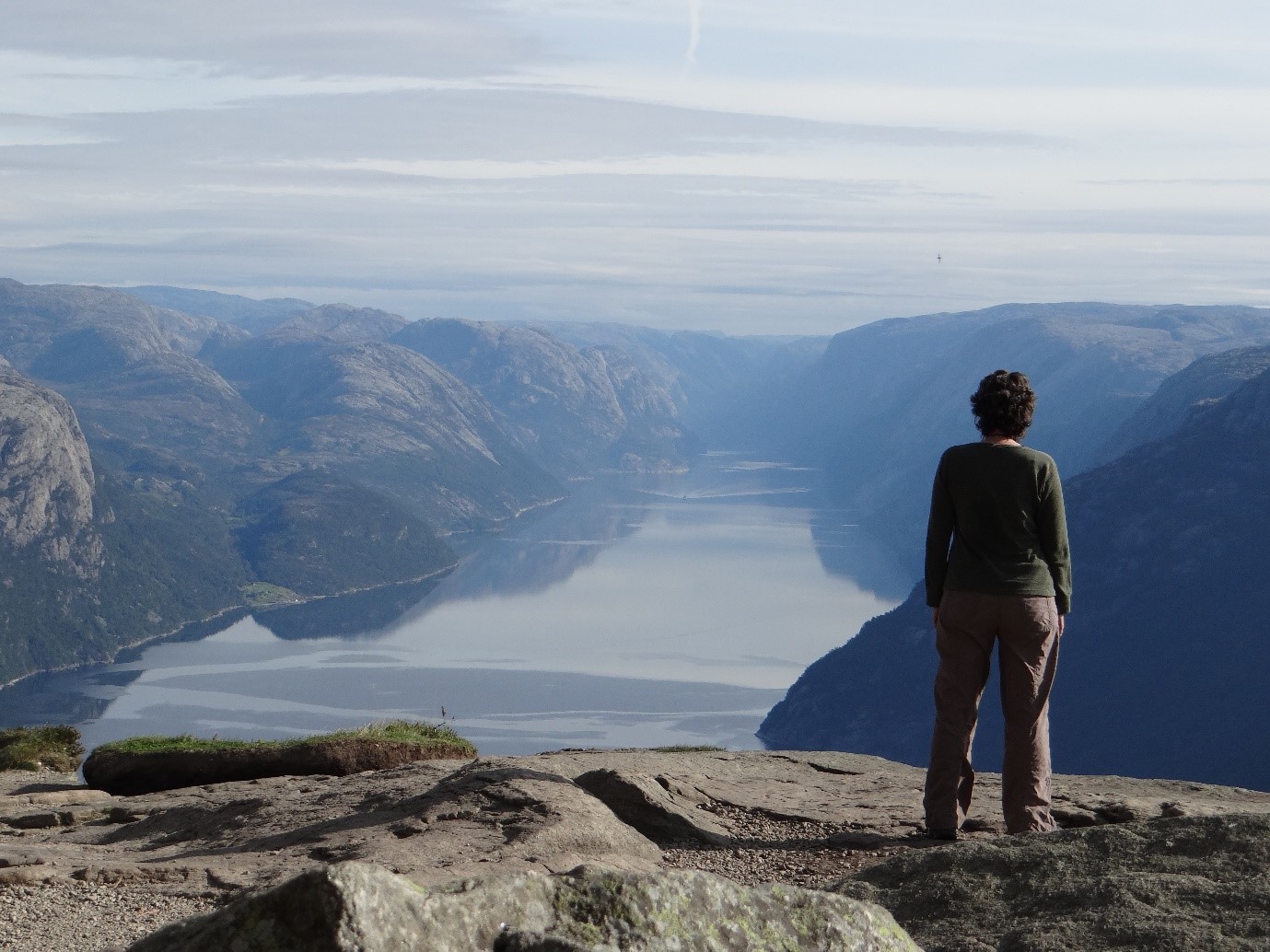
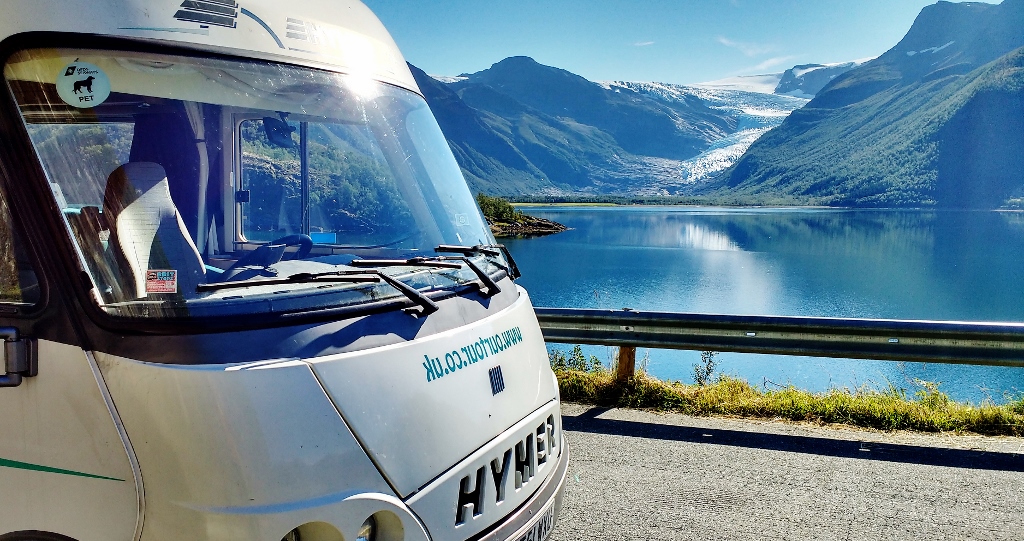
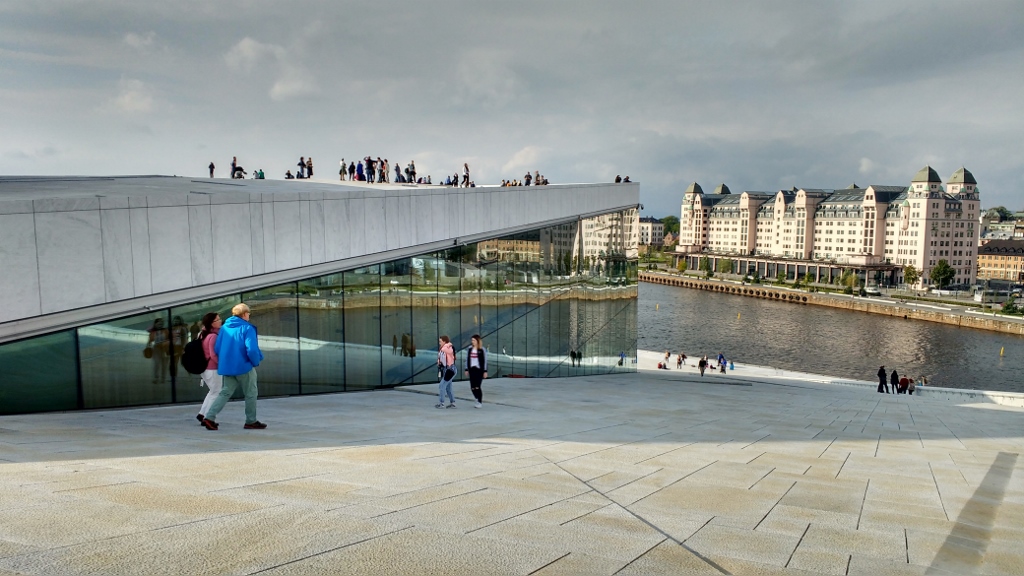
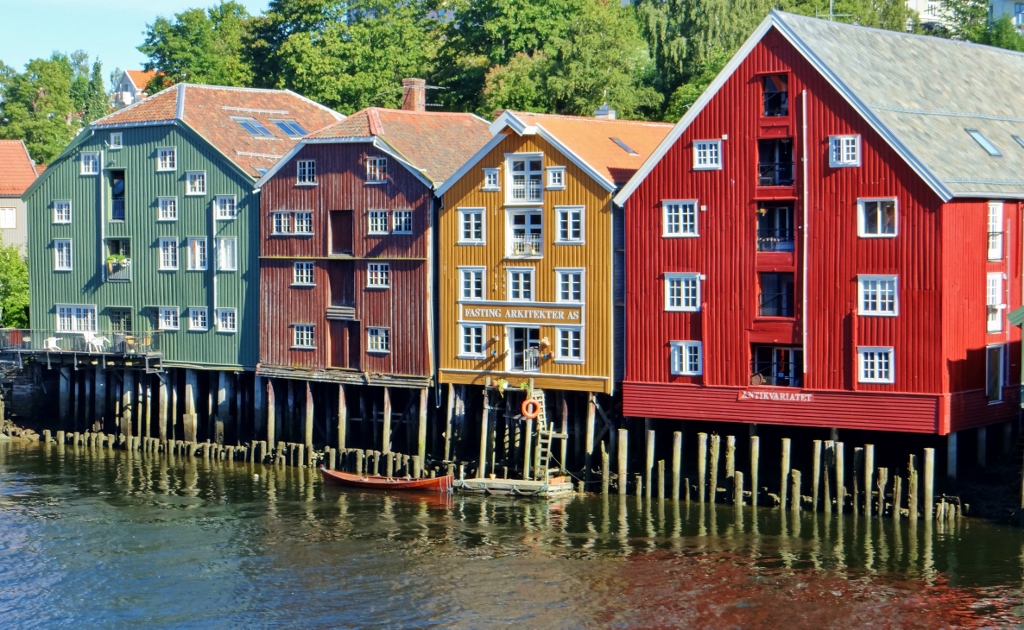
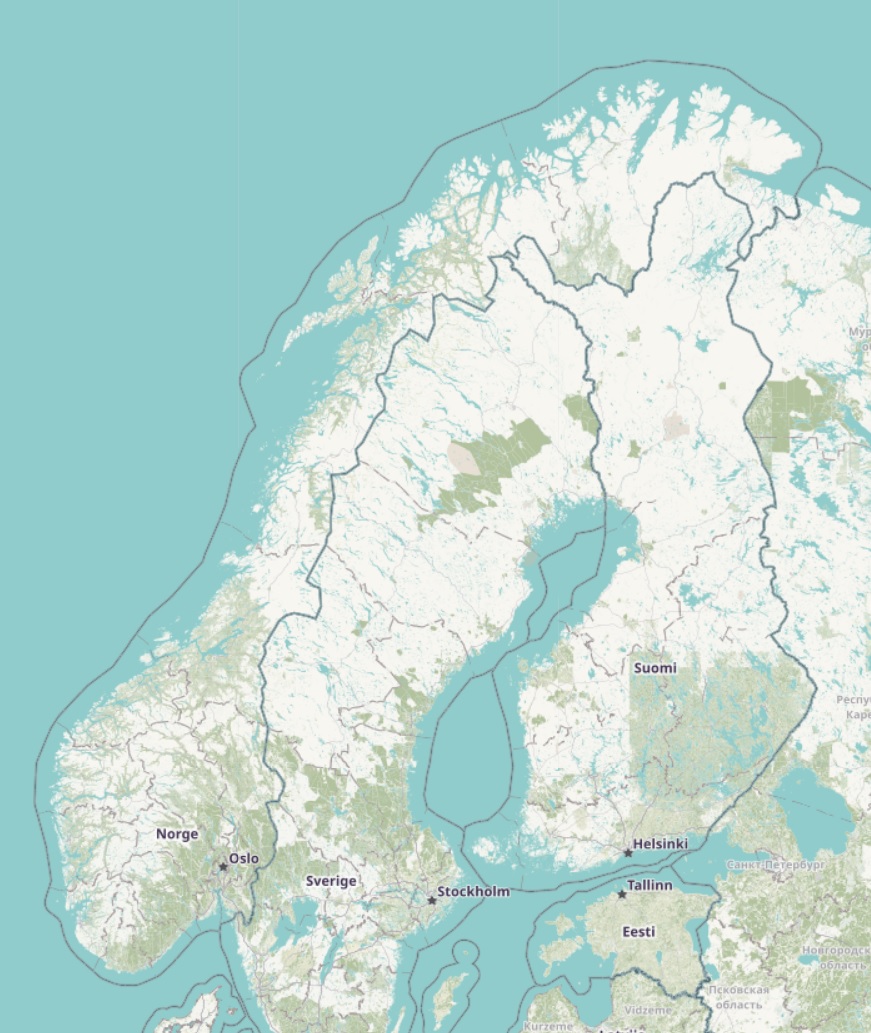
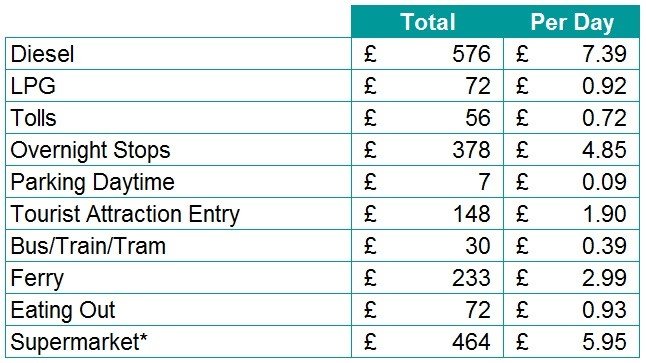
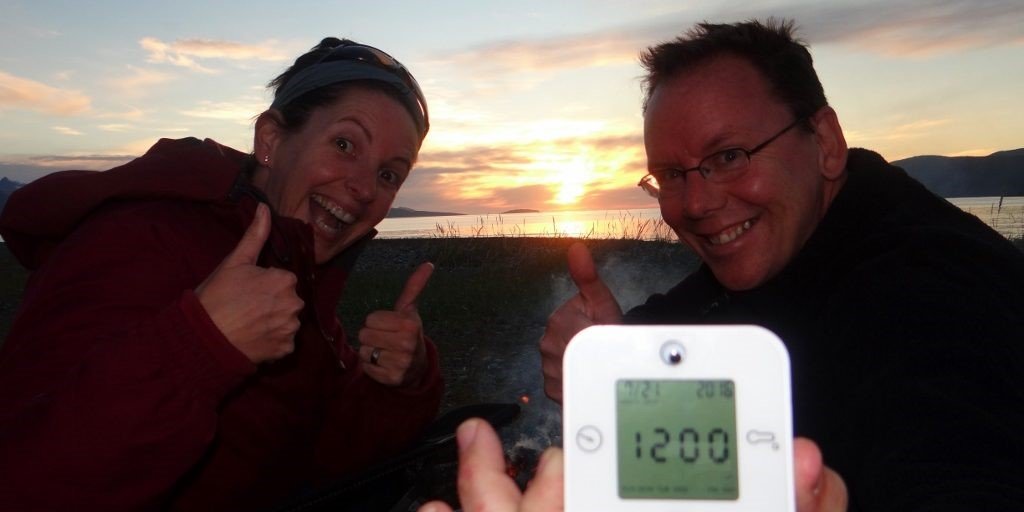
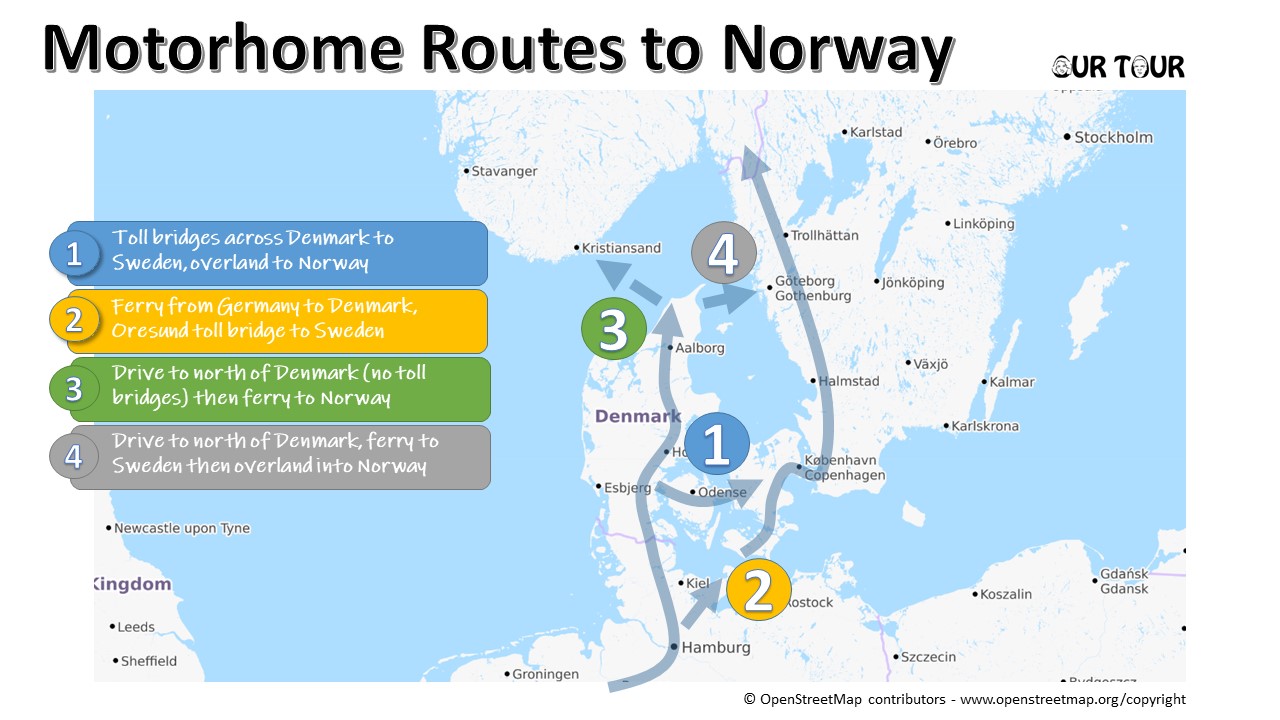
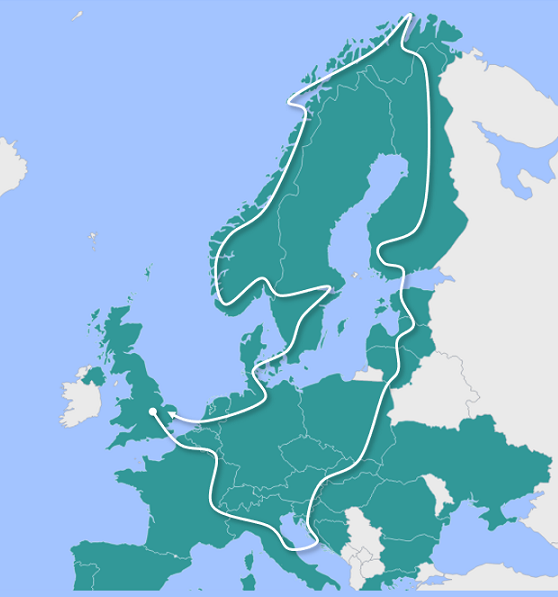
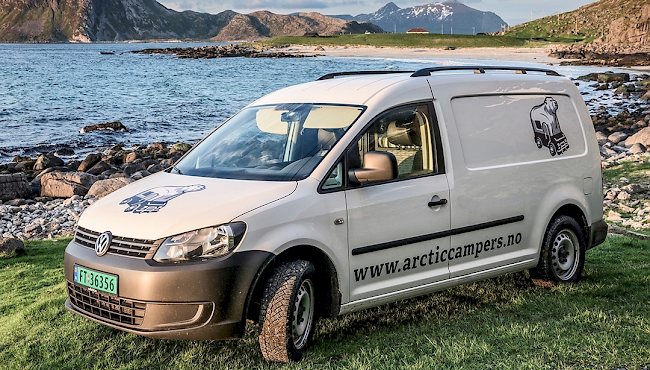
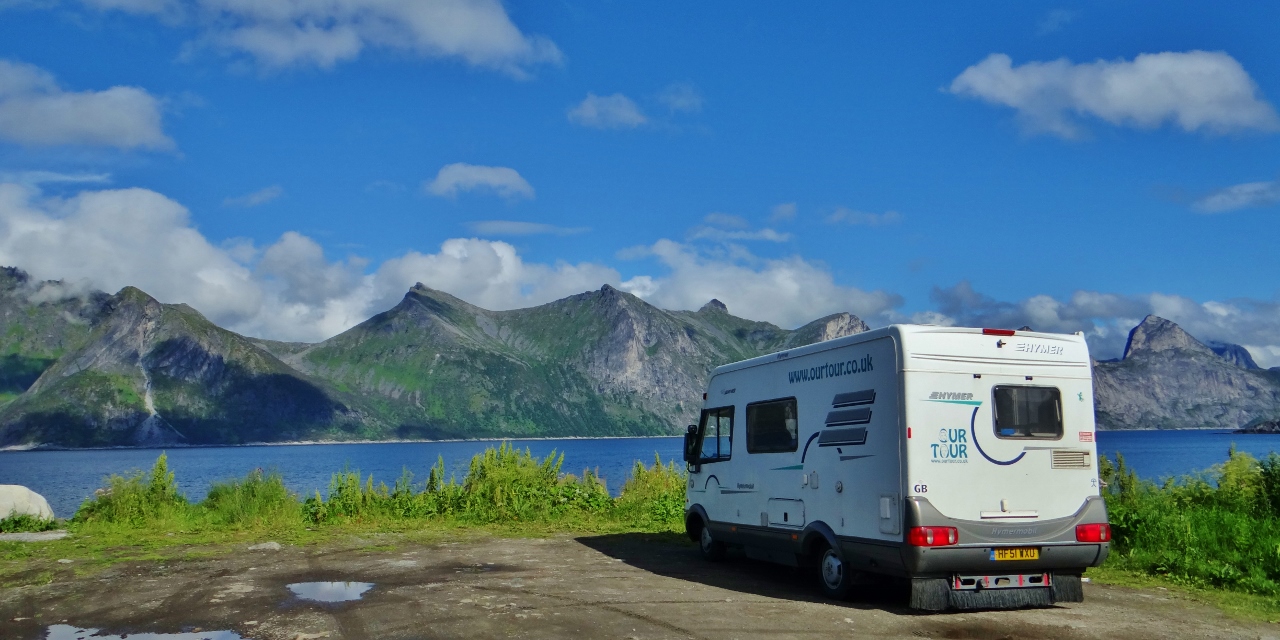
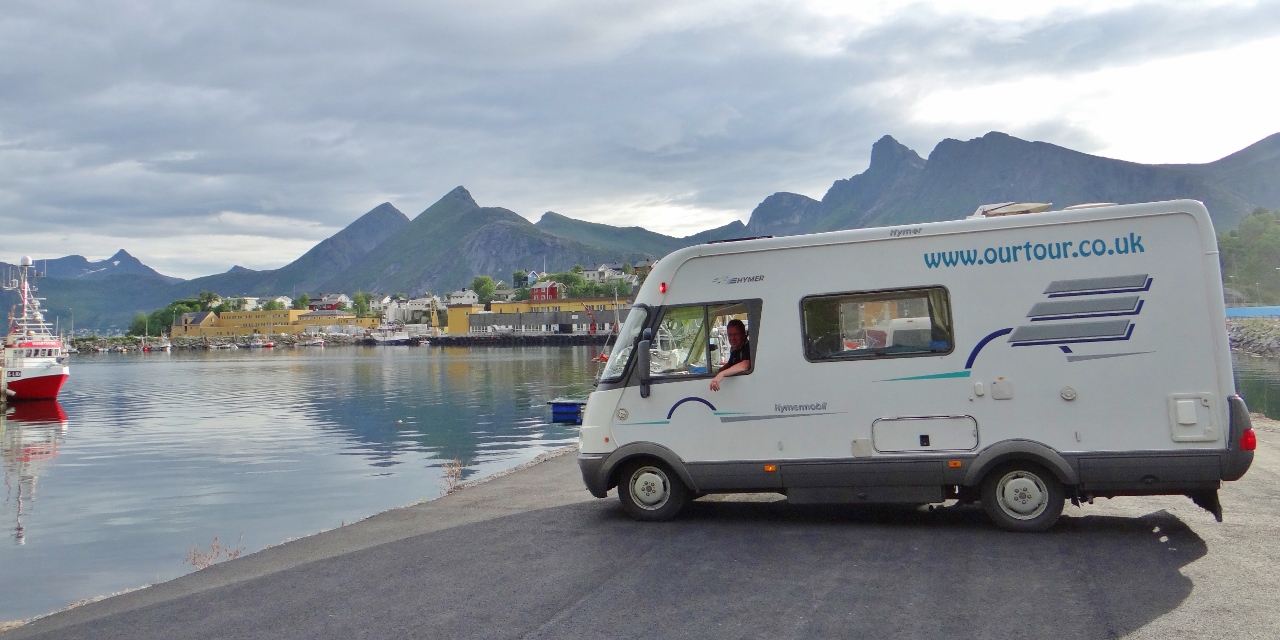
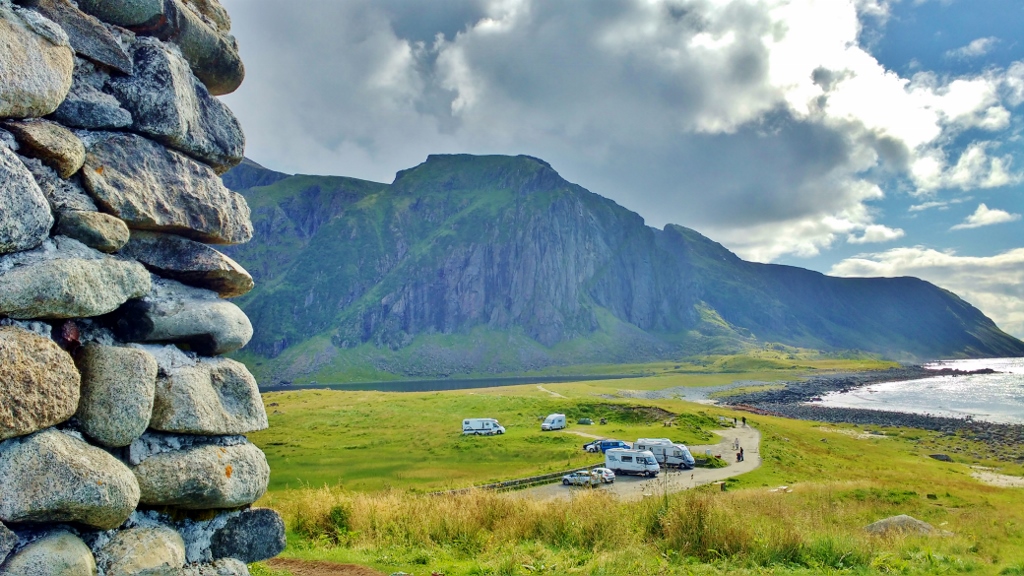
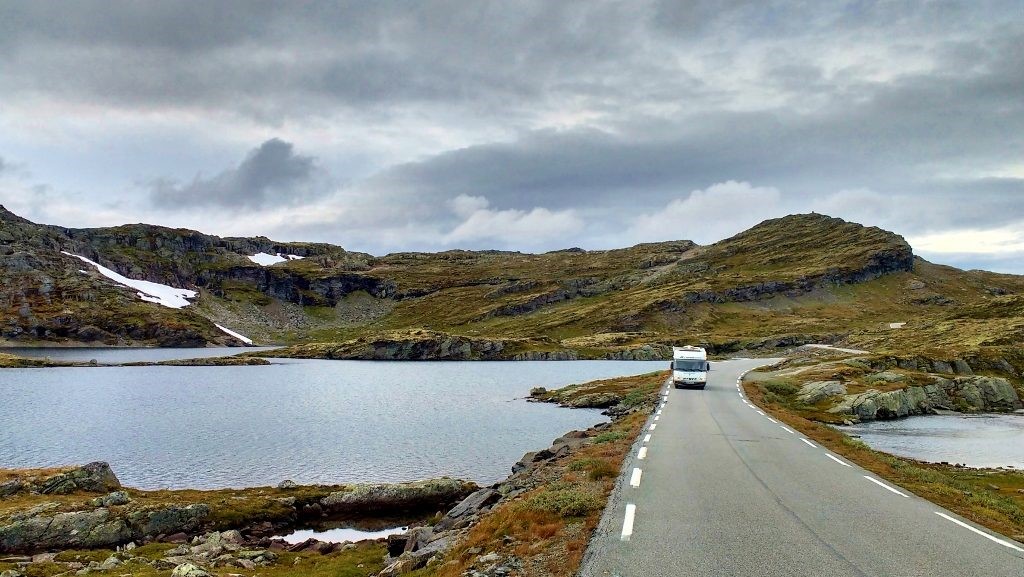
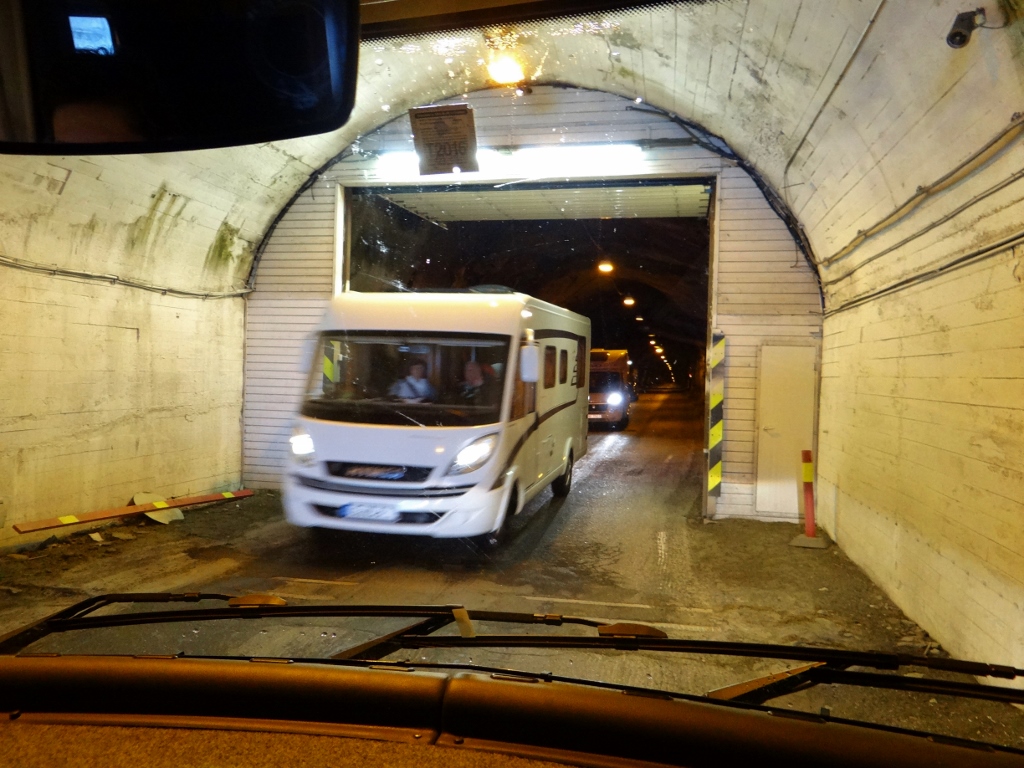
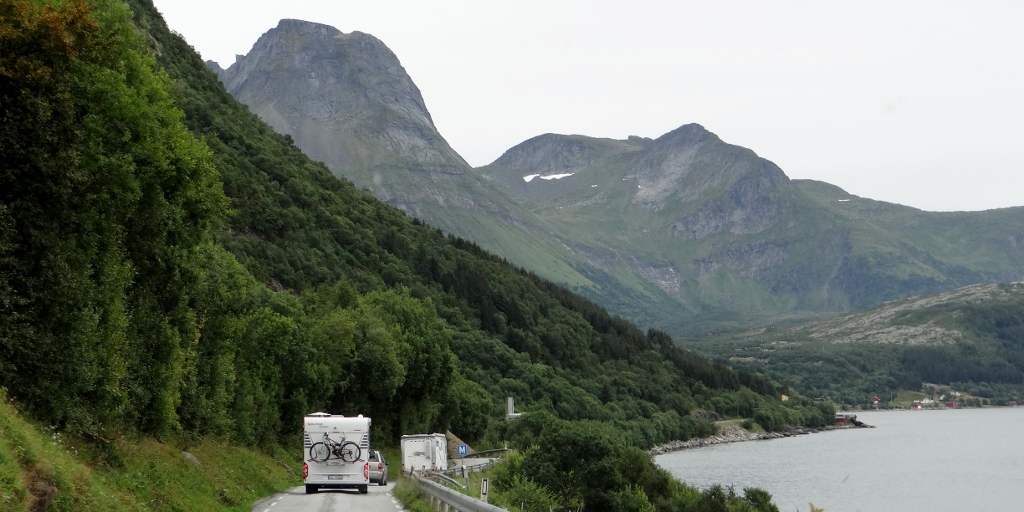

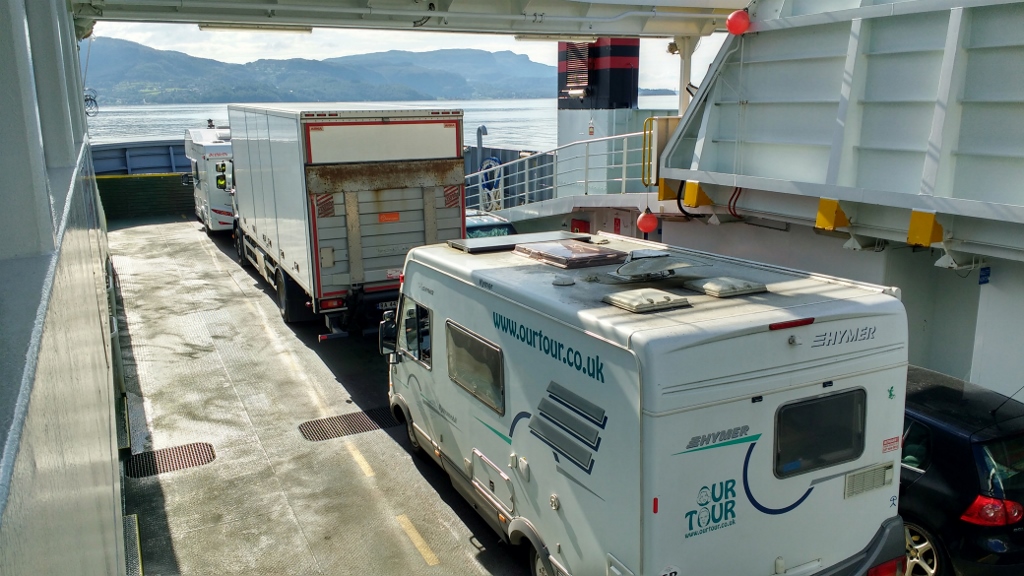
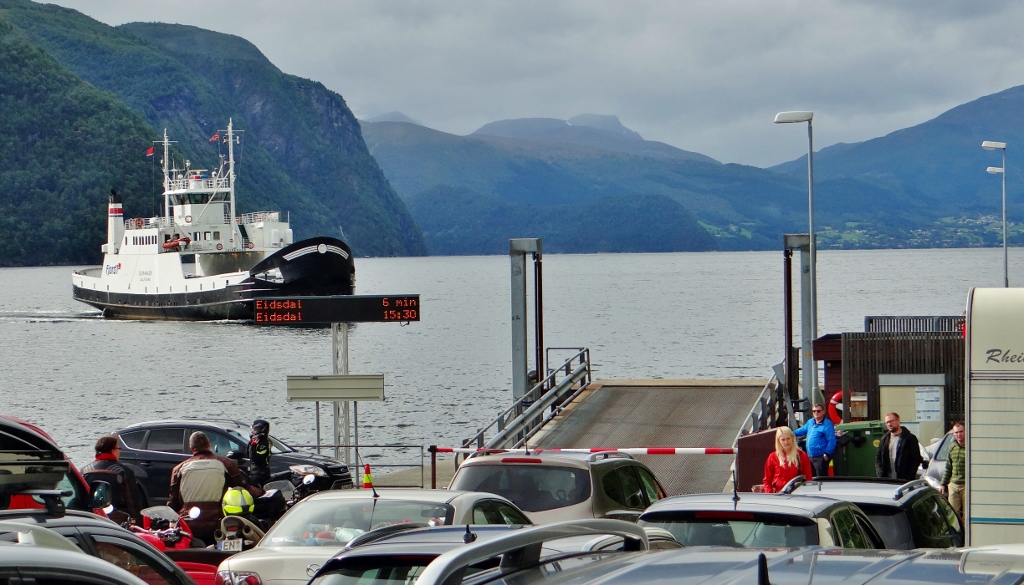
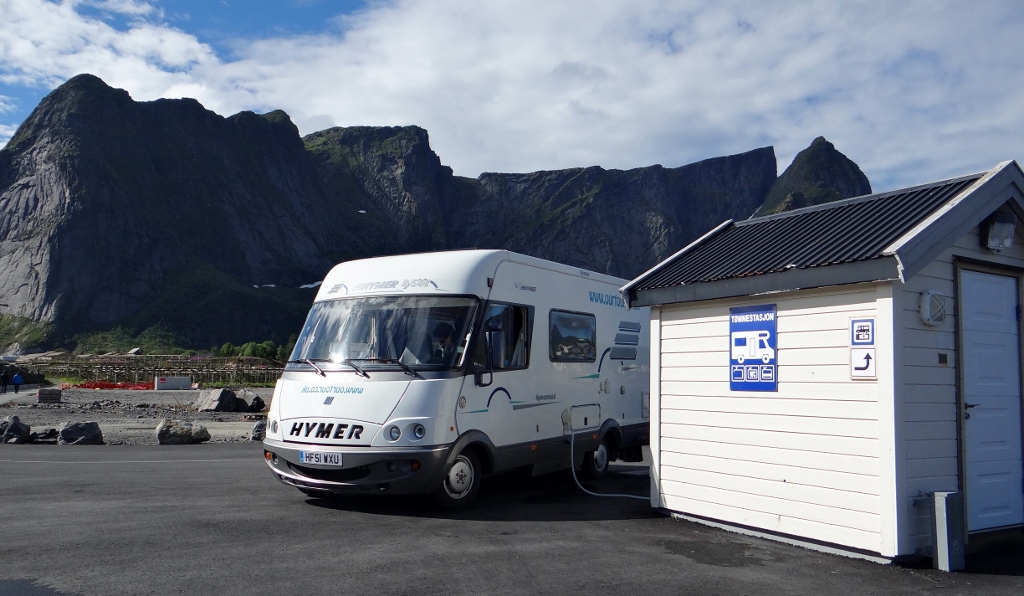
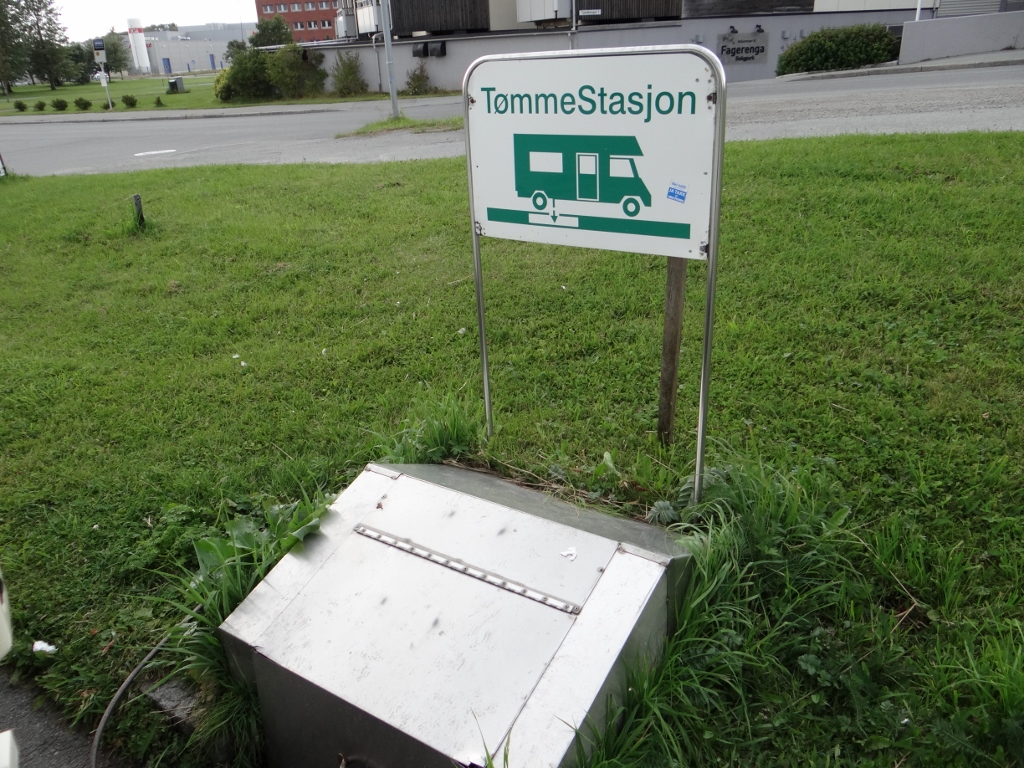
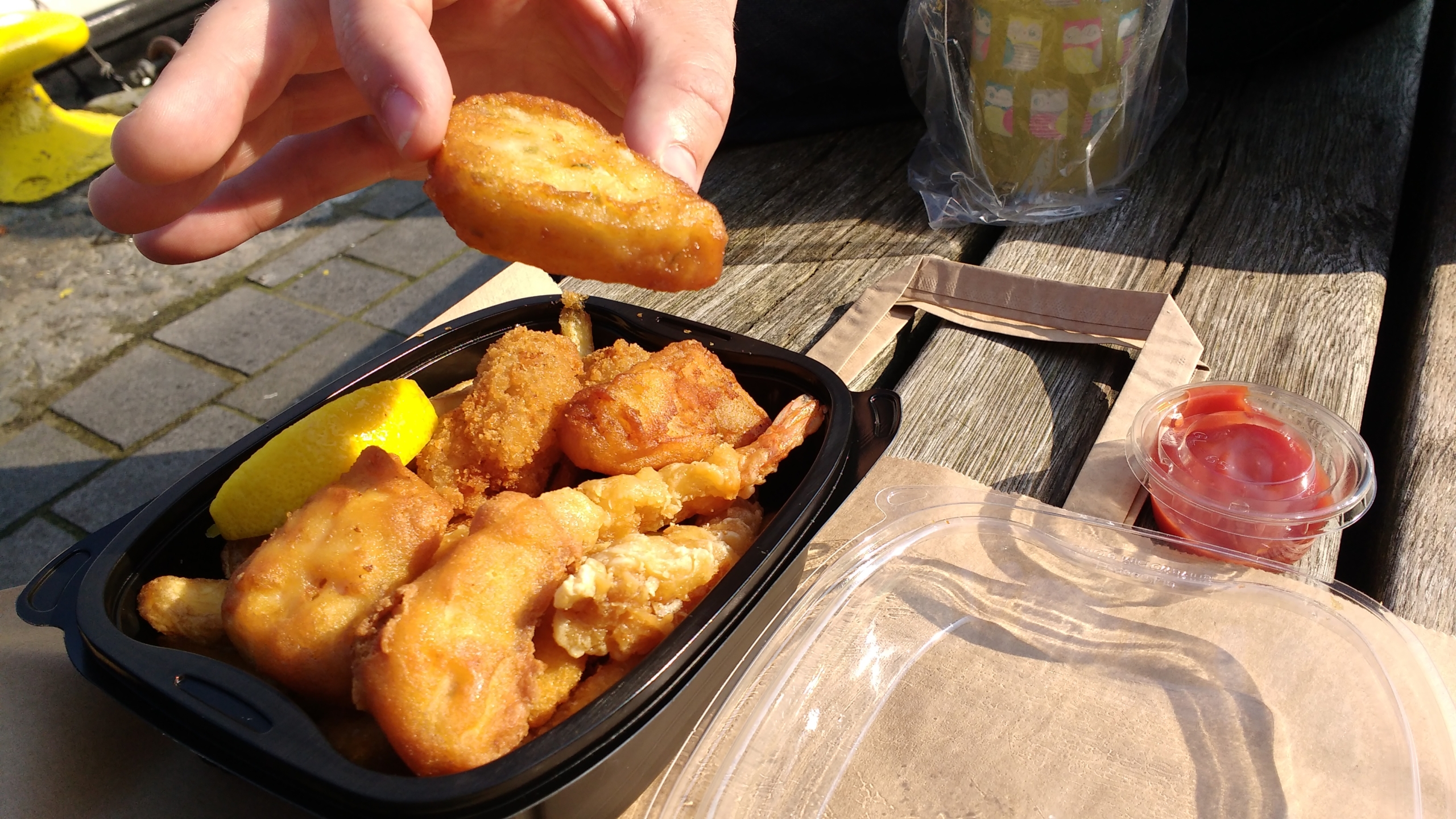
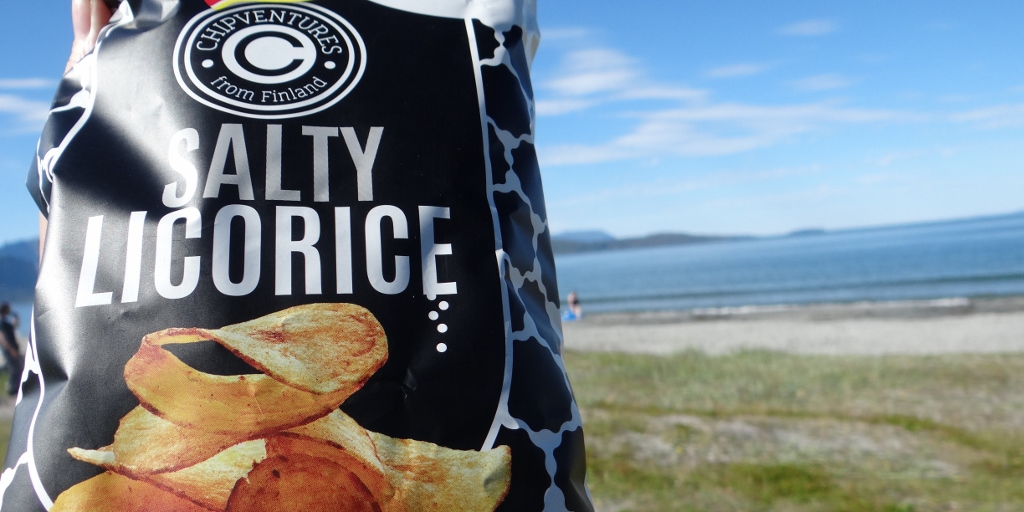
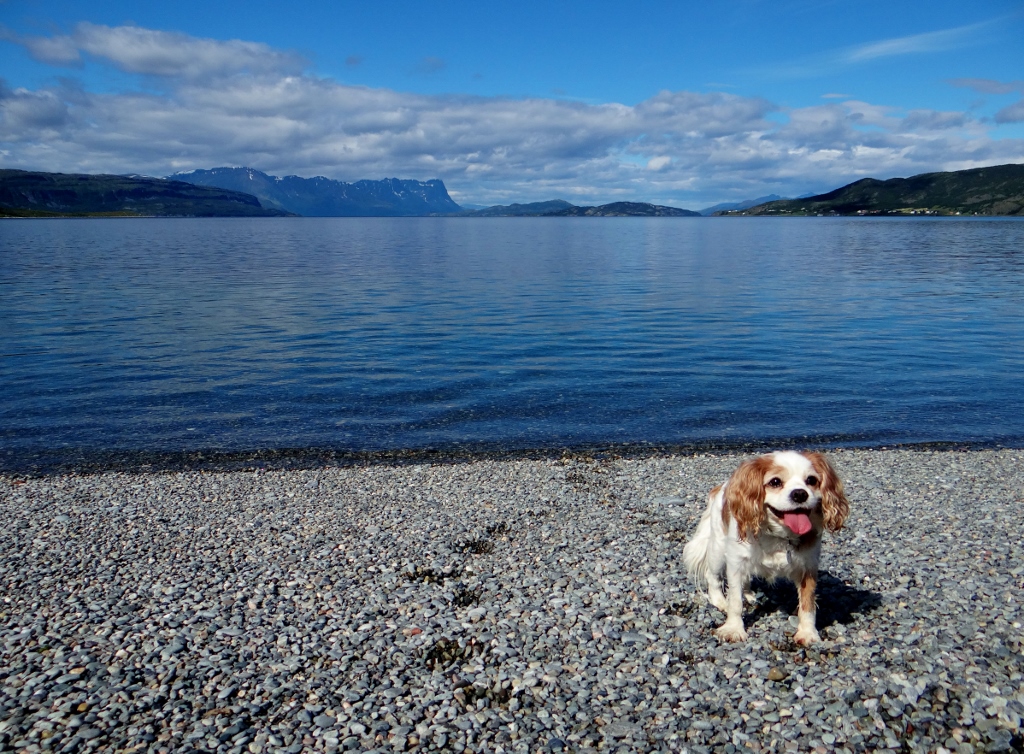
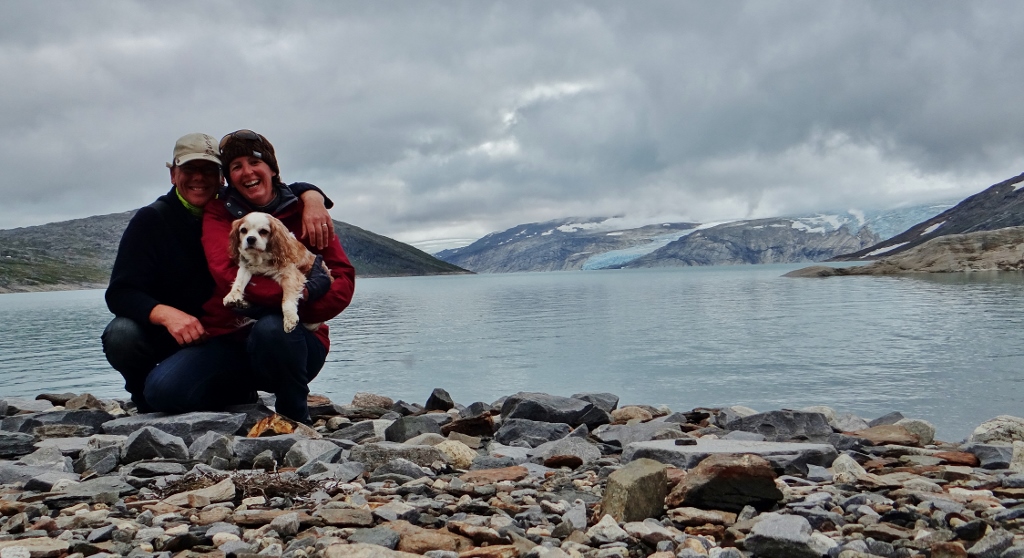
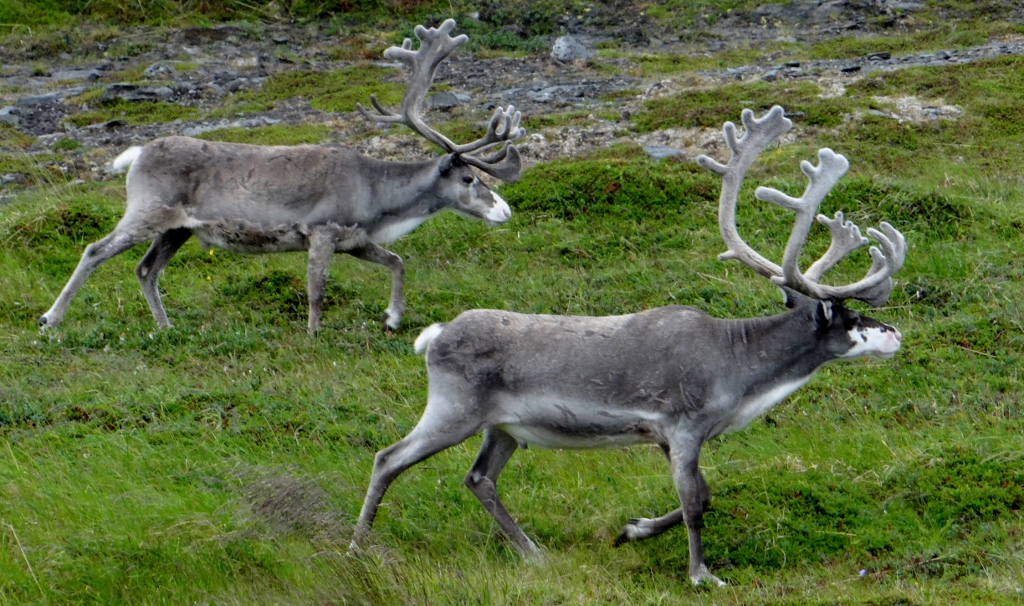
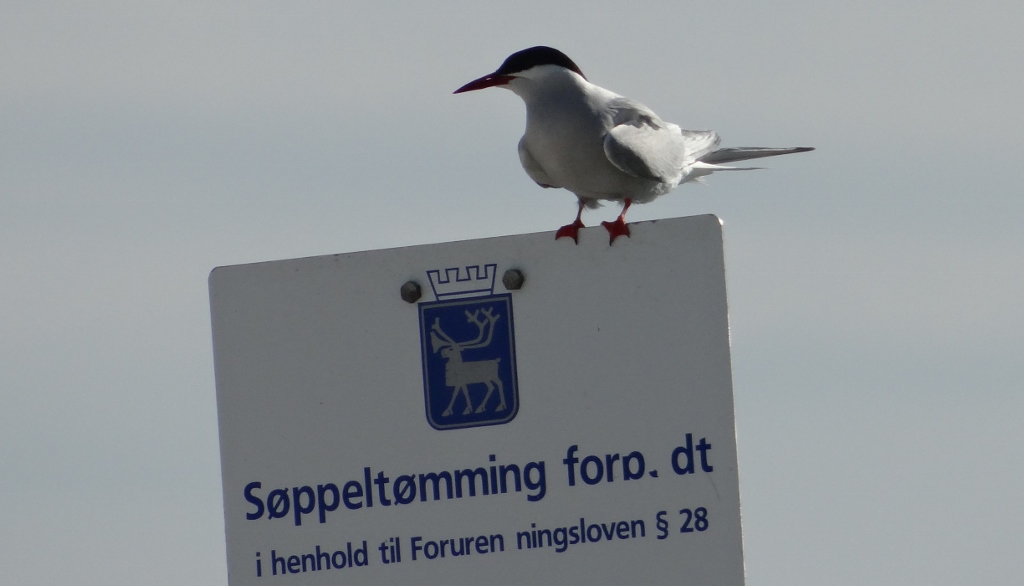
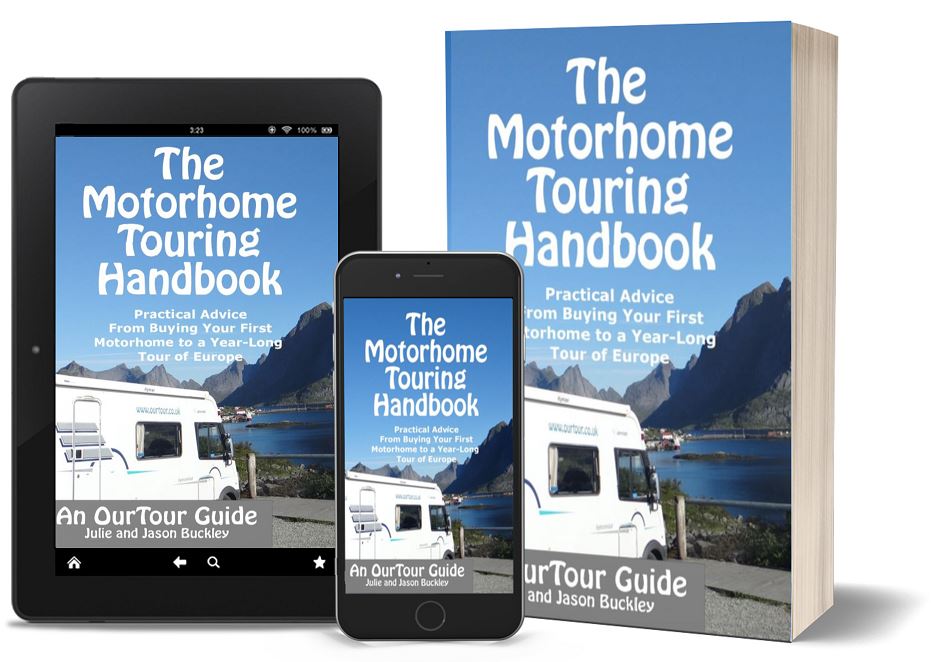

Great advice, thanks and thoroughly enjoyed following your travels.
Hi both,
Thanks for sharing this its just what we need to help plan our trip to the top, hopefully more of the same for Sweden and Denmark and my planning sessions will made so much easier. Stay safe x
Fantastic, thanks for this.
Hi both, been following your tours but first time of posting, I really enjoy following you on your travels and thank you so much for the time and effort you put into your blogs.. Norway looks fab and the scenery is giving us itchy feet. Did you experience any problems with midges or mosquitoes? We are thinking that with the landscape looking so much like Scotland and all that water, that the little biters might be an issue?
Happy wanderings.
Linda
Hi Linda
Great to hear from you, thanks for taking the time to comment!
Nope, we didn’t have any problems at all. Finland was another story, mozzies everywhere by the dozen, (swines, swines!) but once in Norway we didn’t see any at all in 11 weeks. We mainly stayed on the coast, which might have helped, and we met one couple who’d had a few bites, so there must be some biters knocking about over there somewhere.
Cheers, Jay
Hi all, i was sent over here from a facebook friendly link. I am aabout to do a drive in norway next summer, a lot shorter than yours and i have loads of questions, if i offer a small donation to the diesel fund would you consider answering them
Hi Peter
Feel free to ask away and we’ll answer as best we can. If you ask on this comment thread then others will get to see the answers too and hopefully also benefit.
No need to donate to the diesel fund, we love helping folks who enjoy seeing the world. If you are planning on buying anything from Amazon in the near future, please feel free to use the link in the side bar, you still pay the same but the kind Amazon folks give us a few pence for sending you their way!
Ju x
ok, here goes, i have combined all of next years holiday entittlement to one lump so we can try to do Nordkapp in our camper van, thats 28 days, allowing three days either side to get to and from Denmark that allows us 22 days in scandiavia , the general plan was a slow drive up the west cost of norway to Nordkapp and a faster drive down from Sweeden back to denmak. What i am looking for is time lines so we can better make use of the driving time.
you said in this write up that driving is slower how much slower are your average mph around 50 which is main road uk average or slower 40 or less, i need to know so we can work out how much time we need to allow for the drive up. next up is how to get from denmark to norway, what do you suggest?
1, starting at Denmark. which is the better route to consider?
we are aiming at Telemark as first planned point of aim, so from Denmark do we bridge drive to Malmo, or ferry from Frederikshavn to Goteborg, other suggestions could be Hirtshals to Larvik or Hirtshals to Kristansand.
is there much difference from costs to time traveled to make any odds
as we are time restricted we have a slightly larger allowences for the ferries just in case.thats for norway as well as traveling around from denmark.
the next ask is working up the west coast
2,Telemark to Trondheim, any suggested routes other than the E6??
3, Trondheim to Mo I Rana. the last time i was over here we were told about the Fv710 and Fv715 from Trondheim to Namsos, google maps is telling me is 250km and 5 hours, but how much does the ferry cost and in time how long does the ferry take, we were looking at spending a couple of days driving it, is it worth it or is the higher up route 4 better value for time and effort??
4, Namsos to Sandnessjoen, on the Fv17,, this is again on google at 6 hours long and 300km, so for a starter to get going is it as good as they say?
also to make life more interesting, i see a much much smaller road and long path to travel via the Fv769 and Fv770 ( Ramsuika-Salsnes-Hofles-Kolvereid-Foldereid) out on the far coast line, maybe this is worth the ride out and we spend a few days extra out there
5, Sandnessjoen to Bodo, again the Fv17 springs to mind rather than the E6, but any help for ideas please.
6, heres a question from Bodo do i bolt strraight up the E6 to Narvik or do i ferry out to Reine at Lofoten and come back in on the E10 to Narvik??
Hi Peter
I’ll do my best to answer as truthfully as I can – but I can’t answer all of the questions as I simply don’t know the answer. Here goes:
A. Driving speed – we had plenty of time so didn’t track hos long it took to get places. Most roads have a max 80 kph limit, but that wasn’t achievable on the majority of the roads we took due to narrowness, single width, hairpins, hills, oncoming traffic, roadworks, dark tunnels, animals on the road, the view distracting me all the time, waiting for ferries and sitting on ferries. My guess is we averaged between 30 and 35 mph in Norway.
1. Sorry, I don’t know as we’ve only been once. We took the bridge, but bear in mind costs for this bridge (there are actually two toll bridges – one to cross Denmark then another to get from Denmark to Sweden), and all of the ferries in Norway double if you’re over 6m long, then significantly increase with each extra metre. The ferry to Gothenburg seems the best option at a guess.
2. Again, we didn’t go across this part of the country so I don’t know. The E6 looks the fastest route on the map. The other alternative could be to avoid the south of Norway entirely and reverse your route – so you use Sweden to get to Norkapp quickly, then come down the north of Norway, crossing back into Sweden to get home quickly. This way you can maximise your time in the Norwegian Arctic, as you’ll have a good idea how fast the Swedish route is?
3. Sorry, we didn’t use the coastal route for this section.
4. Again, sorry, we didn’t use that route.
5. Yep, we used the coastal route here and very much enjoyed it. If you have a look at our map you can see where we stayed along the route, including a great free camping spot alongside a dam, and another on the main road with a great glacier view.
6. The Lofotens are a highlight of Norway, it would be a real shame not to see them. Senja island is very nice too. I’d maximise my time in this area if you can. The ferry from Bodo probably makes the most sense both time and cost-wise, but again it could prove expensive if you have a long rig.
time line and distence wise doing nordkapp to denmark via sweeden is around 30 hrs driving and 2300 kms, which is about 6-8 days if we over send time on the way up, this will give us 14-12 days to drive up the west coast.
we decided to set a couple of fixed way points for the drive, one is a coastal drive, the Fv 17 has been suggested or the Fv110/115, we want to hit 68degrees so we can say were inside the artic circle and we are really more interested in north than south, i want to do south the year after but in the winter time rather than the summer time
7, Narvik to Alta we were loking to follow the E6 as a slow simple drive off
8, Alta to Nordkapp, E6 and E69
9, Nordkapp to Kirkenes, ( just to say i have looked at Russia again)
10, Kirkenes to Inari to Rovaniemi to Tornio to Lulea, or we miss Kirkenes to save time and drive south from nordkapp and do russia another year
11, Lulea to Lycksele to Ostersund Fv45 ( we like the idea of running down the Fv 45 from Lulea to Mora and down to Karlstad)
11 Ostersund to Karlstad
12, Karlstad to Goteborg and ferry back to Denmark to Malmo and drive back over the Bridges
As we have only travelled part of your planned route it may be worth asking some locals their views. We joined Bobilgruppa on Facebook where we got help and advice from fellow motorhomers in the country. Enjoy your adventures.
We’re setting off for a 5 month trip to Scandinavia in May this year with our cat and found the information in your blog a huge help. Thank you so much for taking the time and effort to help everyone.
Kind regards
John and Mary
Thanks for the comment John and Mary, means a lot to us. Have a great time on your tour. Cheers, Jay
Hi Js! I love your country guides, and have been reading the blog from the beginning over the last few months. Your writing is beautiful, and I feel like I’m reading a wonderfully descriptive travel book. I haven’t actually read a proper book since I started reading your travel diaries!
Just one wee point I noticed above, and I hope you don’t mind me pointing it out but it threw me for a minute while i worked out what was wrong, but in your section about parking resources, I think you are missing a zero off of each of your NOK prices, both in the table and the following , paragraph, first couple of lines.
Keep up the great work. I know you’re slowing down a bit and spending more time in places, and I’m looking forward to catching up with you in Morocco (on here).
Hi Jason,
Thank you for your great blog.
It might be a bit cheeky but would you mind answering a few questions please?
Hubby and i are thinking about spending 2 weeks in a rented campervan in Norway, in mid-june.
Our issue is that we won’t be able to do the south west (Geiranger ext..) and the north (lofoten/ senja)..So we need to choose..which is SO hard!
We JUST want to see awesome nature, wild camp away from crowds and do a fair bit of mountain hiking.
In your opinion, is the north better than the south for that kind of break?
Have you got any Hidden gems to share regarding places to stop over night?
Thanks,
Laetitia,
For the wild camping, head north guys. The south is quiet but definitely busier with tourists as it’s easier to get to. Both areas have incredible landscapes and you’ll find beauty everywhere. Haukland Beach on the Lofotens springs to mind, but there really are so many lovely places. Have a look at the route map on here and you can quickly click on each place for a look at the parking areas. Cheers, have fun, Jay
Thanks so much for this. Just starting to think about Scandinavia as taking off with my 2 dogs and think mainland Europe will be too hot for them. This was so informative. Where are you going this year??
You’re welcome Ellie. Ah, this year, dunno. Tour de France is drawing us into southern France in the summer but apart from that, we’re not sure. Cheers, Jay
Can I just say thank you to the both of you – what a fabulous resource your website is. We are planning 6 weeks away in our motorhome Dolly this summer, with Norway being the main event – but we’ll also spend a week getting there and a week back. As I need to check my emails daily, could you please advise how much of the time your three SIMs managed to get a data signal. Did they work even in remote beauty spots?
Hi guys. The Three SIM worked pretty much everywhere. We uploaded blog posts from across Norway from each location we stayed in using the Three SIM, so you can get an idea how remote the locations can be. This applies to almost everywhere in Europe and North Africa now – unless you’re off in the desert or trekking in the mountains, you’ll get a data signal. It’s not always 3G, but it almost always works, amazingly. Cheers, Jay
Thanks for your info, very useful. Do you remember where you had your dog wormed, before crossing info Finland? Also did you drive through Russia?
Hi Sheena. Charlie visited a vet in Parnu in Estonia, full details can be found here https://ourtour.co.uk/home/vets-for-charlie-haapsalu-estonia/ We opted not to drive through Kaliningrad as we know people who have been before and weren’t very inspired. If I remember correctly, you had to buy a visa (and insurance as ours would not have covered it), so it would have cost quite a bit too. As for actual Russia, we wouldn’t have been able to visit as we hadn’t arranged visas before we set off.
Hello, I’ve enjoyed very much Reading your history of your journey throughout Norway. We found a lot of great tips and others so thank you for that. We are still enjoying our last week ( home at 26 june ) but wanted to let you know your blog was very helpfull.
Thank you again, Inge and Patrick, Geel, Belgium
Thanks guys, much appreciated, happy travels, Jay
Just visited Norway on a 2 week cruise. Want to return independently in my motorhome. Can you give us some advice on ferries from the U.K to Norway or the route that we need to take. Really enjoyed reading your blog and watching your videos. They have inspired me and have allowed me to share with my husband the experience I had at NorthKnapp. Thank you
Hi Coral, sounds like you had a great time! As far as we know, there is no direct ferry from the UK to Norway. We drove across the Netherlands, Germany and Denmark’s toll bridges to get to Sweden, then crossed by land to get to Norway (actually in reverse but the route is the same). There may be ferry routes to Denmark or North Germany, we never looked as we wanted a shorter sea crossing for our pooch. Good luck, happy travels, Jay
I am planning a 2 week campervan trip in north Norway, so your blog tips are extremely helpful. Thank you for all the useful information and tips.
Thanks Nimish, have a cracking time!
Hello guys. We leave Cornwall on Tuesday for a 6 week tour of Norway and I’d just like to thank you for your amazing blog. Most of our questions have been answered reading through your posts and your passion for this country has got us very excit ed. Did you ever struggle to find places to camp?
Go go go! We had park4night and the camperstop book and GPS from ourbumble.com and had no trouble finding places. Cheers, Jay
£200 stowed food plus all your normal stuff. How far over the 3.5 tonne limit wher you?
What food would you recommend stowing?
Hi Ian. My guess is we were over, but by how much I don’t know as we didn’t weigh the food. My fear with weight is steep descents, and we had no problems coming off some pretty steep hills, but it is a good safety point that you make. I’d pack anything which will last, dried food, frozen meat, pasta sauces, tins of vegetables, soup etc. You can find food which isn’t crazily expensive, but you will probably be wincing at most of the prices. Sea fishing gear is useful too. Cheers, Jay
There is also a ferry from Hirtshals to Kristiansand.
Hi, great blog very informative. If you hadn’t had your dog with you would you have made much use of a motorbike or bicycles? I am trying to decide if they worth the space/weight.
Fraser
Hi Fraser – yes, we would have. Having a moped/motorbike would have been especially helpful for visiting cities and we may well get one in future, although we’d need to up-rate our van to allow it. Cheers, Jay
Well what an informative and fantastic blog, I have learnt so much, so thank you so much for taking the time out to write it.
Just starting down the MH route after years of caravanning / camping etc, so it has been very useful indeed.
I fell in love with Norway many years ago but have only had the odd trip there for photography, walking and a bit of climbing mostly in the winter.
Your trip is stuff of dreams for me, so I’m planning to turn it into reality when I retire early the end of next year. I have a lot of problems convincing the wife however, as I have limited driving experience abroad, but of course I plan to give the van (when I get it) a good shakedown in the UK first.
I would love to travel up in Northern Norway in the winter however common sense tells me this is probably not a particularly good idea, so a Summer to late Autumn trip will be the aim.
Anyhow enough waffle from me.
A big thanks from a newbie to motor homing, I have learnt so much here and I really appreciate you taking time out to publish it.
All the best and Safe Travels
Steve.
Thanks for getting in touch Steve and your kind words.
Driving abroad becomes second nature very quickly and the roads are much quieter than the UK. I started driving our van in Finland and then into Norway as the roads were so quiet! Enjoy your next few months of planning and the adventures that will follow.
Ju x
Wow…. just WOW !!!
Thank you for providing this depth of information and continued advice, what a wonderful resource.
All I need now is digest the information herein, pay off the mortgage and GO……
Great info! Love your blog style – very modern and useful. Ages ours a bit lol – and shows we’ve not updated it in decades!
Off for 6 weeks in Scandanavia this year, so looking for tips – so thanks for sharing!
Hi guys, hey, thanks for Do Your Dream! Massively motivated us in our preparation. Have fun in Scandinavia, fantastic part of the world. Cheers, Jay
Hi can you list the most favourite free places to stay around bergen, we have just 2 days in a hire car :-)
Sorry Adrian, we were only there a couple of nights ourselves. Jay
This information is amazing, thank you so much, I will keep coming back to it.We are planning a trip this year with our 2 Spaniels on board our motor-home. I will be using all your advice. We will pack for the moon….
Thanks Wendy, you’re welcome! Jay
Hello! Thank you for all the information. My husband and I are keen to do Norway and are debating renting a motorhhome or doing some transit/organized tours. Our thing is we will be bringing our son who will be 16 months. Does anything stand out as something you suggest for our first trip with the little man? I like the idea of bringing tons of food and staying at the picnic sites to feel safer.
thank you!
Hi Sinead. I’d imagine Norway to be the perfect country to travel with your son. Beautiful landscapes, very safe feeling, friendly people, very relaxing. I can’t think of any issues, but would arrive well stocked with food and anything else your son needs, as it might not be available in the North, or may be very expensive. Cheers, Jay
Hi guys. Great blog – thanks. As newbies we are worried about getting gas for cooking and heating as we travel. We are planning a three month tour of Norway and Sweden this summer and have stocked up with 2 x 6kg propane cylinders. We have no idea how long these will last us. Is it possible to get them re-filled or will we need to buy a Norwegian cylinder and regulator?
Hi Mike. 12Kg of gas for three months will be a push unless you plan to use mains hook ups a fair bit. You can’t usually get UK cylinders topped up outside the UK. We have a GasIT self refillable LPG system, but these aren’t cheap to fit (have a look at Safefill cylinders, they could be an option as they don’t need ‘fitting’). The best option is probably the one you suggest: get a local cylinder and pigtail, but this isn’t something we’ve needed to do so can’t tell you for sure. Cheers, Jay
Hi Julie and Jason,
Wow…..Thank you so much for sharing this very thorough and helpful tips.
We are going to Scandinavia – mainly Sweden, Finland, Denmark and Norway with our friends end of May until mid-July, so there’ll be 2 motorhome.
This blog has so much details that we will definitely use for our trip.
I just have some few questions and clarifications if you don’t mind. I will break it down to 2-3 topics so it’s not to much for you to read and answer.
1. Currency – you mentioned here that you have to make an effort to spend to get rid of your cash. Do you think to change 100euro is enough? Just so at least we have some cash? Another thing, how about for laundry, did you not have to use coins?
2. Driving in Norway
a. Roads – you’ve mentioned that you’ve traveled 4849 kms, is this just in Norway? Or is it the total kms you guys done for the 11 weeks trip?
b. Ferries – you’ve mentioned under 6m – am I correct to say that up to 6m motorhome should be and to be charge as car with the driver? Then pay extra for the passenger?
c. Tolls – you’ve mentioned that with EPC the invoice is being sent in your email. So how do you pay for the charges whilst you were still on road? Via internet in their website or do you have to go to their office to pay? Also, what’s the difference between Autopass and EPC? and which one you would recommend that is more useful and easy to use?
d. LPG – we will be carrying 2 x 11kgs, this should be enough for 7 weeks trip right?
I think that’s it for now.
Thank you very much in advance.
Cheers,
Mina
Hi Mina
I will try to answer as best I can, but it’s a couple of years since we were in Scandinavia (and have been to a lot of places since) and things may have changed.
1. We found it was much easier to pay by card than cash, but we could spend cash it’s just not as common as other countries. I can’t really say how much will be enough for you as it will depend on where you are going and what you are doing, but I find it always makes sense to have some local currency in your purse – even if its just as an excuse to spend it before you cross the border into the next country!
2. a. The article is only about our time in Norway, so that will be the amount for there only – it’s a long country.
b. Yes 6m or under on the ferry and you pay the car price (which includes the driver), passengers are extra.
c. Autopass you pay upfront – put an amount of money into your account and it takes it from that, EPC will invoice you a couple of months after you leave the country. Both are paid online.
d. Again I can’t really comment on how much LPG you will use as it depends what you use it for, where you are staying (campsites mean less gas use as you can use electricity instead for cooking and heating) and what the weather is like as that will determine how much you use for heating.
I hope that helps clarify things a bit.
Cheers Julie
Fantastic write up. Can’t wait to delve into the individual blog enteries
Thanks Gareth – Norway’s a fantastic country to travel by motorhome – hope you find the info useful and get a chance to travel there. Cheers, Jay
Very interesting and so informative. We are planning to go there ourselves after purchsing a motorhome this year. Your information and experiences, although 2 years ago, is still, I believe, very relevant.
Superb read – we will definitely be looking at this in the near future. Thank you for taking the time to enlighten us newbies. Your information will be invaluable.
I do have one more question regarding motor home……….not taking into account financials, would you say a 32 ft (10m) rv will have any significant dramas ?
Thank you in advance.
Andrew
Hi Andrew and thanks! I can’t really answer your question, as our motorhome have all been much smaller than that. From what we’ve seen, 10m vans are of course feasible (lorries and coaches manage to get around!) but perhaps need more planning to avoid smaller roads and find suitable parking places. You’ll certainly be an object of fascination among your fellow motorhomers! Cheers, Jay
Hi. How strict are they on the ferries with the length? Ours is 6.39m. Great blog, thanks. Looks a fantastic place to travel. I might just have to get a Christmas job to pay for the extra expense of Norway!
Varies between ferries Kevin but not that strict. You’d get away with 6m for all but the real sticklers I reckon. Few had any kind of measuring system, but we have heard of the tape coming out on the one occasion! It is an incredible country to motorhome around. Cheers, Jay
Fantastic, thank you. Looking at Rv’s next June, just trying to decide on routes etc, this is very helpful.
Hello! Love your guys blog! Just wanted to ask exactly how you got from Denmark to Norway, we have a mercedes various so over the 3.5 tonnes too. Thank you!
Hi Hettie – we went the other way (Norway to Denmark), but in essence took the Øresund Bridge over to Sweden (has a toll), then drove to Stockholm, then across the land border into Norway near Oslo. You can take a ferry direct from Denmark to Norway, but we wanted to see Sweden. Cheers, have fun! Jay
Brilliant! thank you for your help Jay!
Superb site, very useful thanks. This is going to be our first time at turning left at Calais and the Norway blog is very helpful. Do you have the Ferries text squirrelled away in the site anywhere? You appear to have a duplication above.
Cheers
Phil
Hi
I really enjoy reading your blog/website.
We would like to visit Norway this August and have 16 days to get there and back from the UK and travel around as much as we can…
Would you say that is feasible and that 3 days/nights would be sufficient to make it up through Germany and Denmark and hit Norwegian soil on day 4?
Given the time constraints we are thinking of concentrating on the South West and only as far north as Trondheim if we can make it but perhaps even only to Alesund or Molde if that is more realistic…(then back down to Oslo via Lillehammer?)
I am just trying to get a feel for whether we are being too ambitious?
Thanks again!
Mark
Hi Mark. I think I’d consider hiring a van in Norway and flying out. If that’s cost prohibited, there are good free motorway networks in the transit countries, so 3 days seems feasible to me. Once you’re in Norway speeds drop significantly, and routes are more torturous, so your remaining 10 days might not get you that far (at least with knackering yourselves driving and rendering the trip awful as a result). I’d plan the trip day by day on Google Maps to see what is feasible. Cheers, good luck mate, Jay
Hi Jason,
What an incredible life you are both living. Thank you for providing so much useful information.
We are going to Norway for the first time in July and planning to spend 5 weeks there. Could you please help me with two questions.
1.We will be hiring a motorhome that is (L)6m x (W)2.1. We have driven a similar motorhome in Australia, but on long, straight roads. I am slightly nervous about driving along the west coast, given you refer to some of the roads being narrow and twisting. I notice your motorhome is largish, but how did you manage the hair pin corners and passing oncoming traffic on the narrow roads, and I imagine they have some of the best scenery?
2.How long would you suggest spending on the Lofoten Islands?
Much appreciated,
Peter
Hi Peter. First off: thanks for the kind words, much appreciated. The motorhome you’re hiring is about the same size as ours and we didn’t have any issues on the hairpins. They’re often made for coaches to pass, so are easy in a 6m van. The narrow roads are harder to deal with but part and parcel of visiting the country. I made sure I knew how far to the right I could get, and tried not to get pushed down the road by following traffic. We had plenty of time so pulling to let traffic past wasn’t a big issue. The Lofotens are wonderful, as are the islands to the north. They’re a long way north though, and it’s hard to do more than 40mph across much of the country, so it depends I think on where you’ll drop your van off (you could drive through the Lofotens in 2 or 3 days, but it wouldn’t be relaxing). The fjords to the south are spectacular too. 5 weeks sounds like a long time but it’s a long country and there’s a lot to gawp at! Cheers, have a fantastic tour, Jay
Thank you for sharing.
Thanks alot for the advices that you offered to us , now just waiting to experience Norway by th end of july 2020 and for 3 weeks by using own camper
You’re welcome Haki, have a great trip! Cheers, Jay